Birds are a fascinating and diverse group of animals that inhabit a varied range of environments all around the world. In South Australia, there are over 400 bird species, making up a significant proportion of the state’s wildlife.
This region is home to many unique and iconic birds, such as the laughing kookaburra, emu, and galah, which are well-known not only in Australia but also worldwide.
Aside from these famous species, South Australia is also home to many other lesser-known but equally fascinating birds, with different habits, sizes, colors, and songs.
This article will delve into the diverse avifauna found in South Australia, providing an overview of the region’s birds’ characteristics, habitats, and conservation status.
1. Bee-Eater
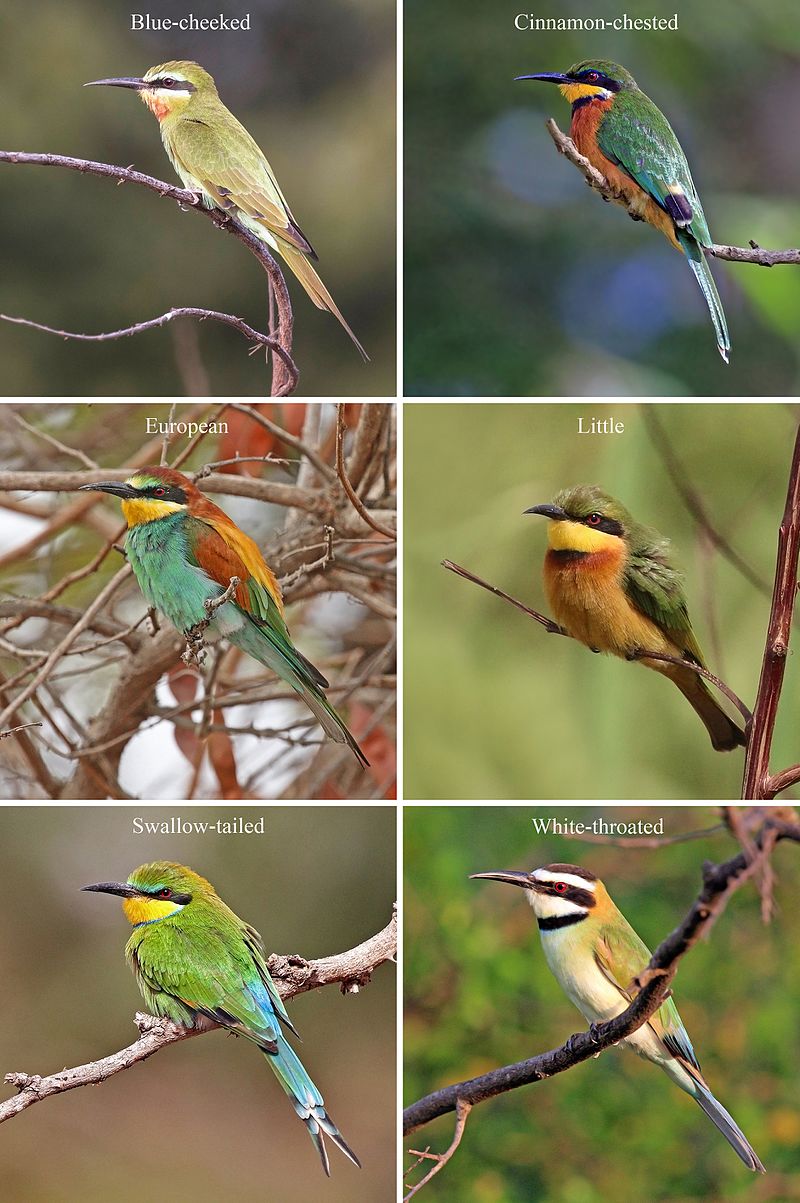
Bee-eaters are one of the most beautiful and vibrant birds in existence. They have a slender body, long wings, down turned bills and their signature elongated central tail feathers which make them instantly recognizable from afar.
Their plumage is incredibly colorful with many shades ranging from blues to greens to reds that glisten when they fly through the air.
These stunning creatures can be found all over Africa, Asia, Southern Europe, Australia and New Guinea where they feed mainly on bees but also other insects like flies or wasps as well as small mammals such as lizards or rodents.
Bee-eaters live in colonies near rivers or wetlands so that they may easily hunt for food while staying close together for safety purposes.
Additionally it allows them to better display their impressive courtship dances during mating season.Scientific classification:
| Kingdom | Animalia |
| Phylum | Chordata |
| Class | Aves |
| Order | Coraciiformes |
| Family | Meropidae Rafinesque, 1815 |
Also Featured In: Common Nigerian Birds, Turkey Birds You Should Know
2. White-Bellied Sea Eagle
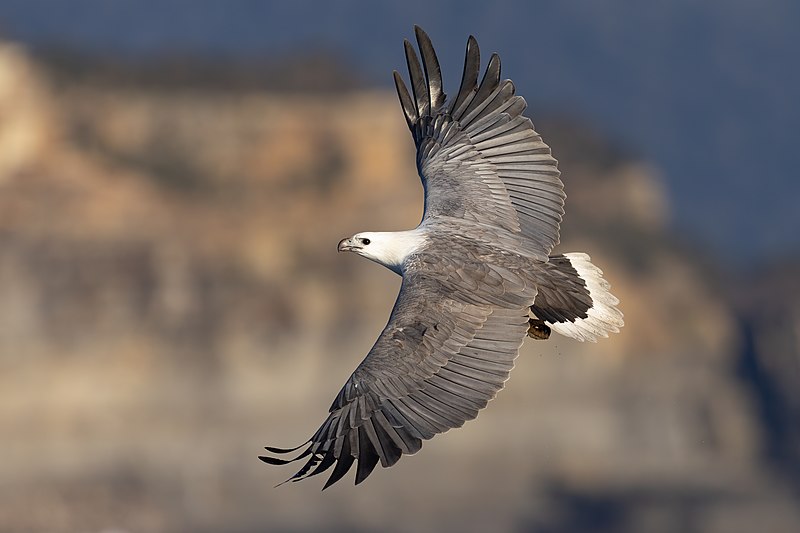
The White-bellied sea eagle is an impressive large bird of prey that belongs to the Accipitridae family.
It was first described by Johann Friedrich Gmelin in 1788 and it is closely related to Sanford’s sea eagle found in the Solomon Islands.
The adult white-bellied sea eagles have a stunning appearance with their white heads, dark brown bodies, and long wings which span up to 1.8 meters across.
They can be seen soaring above coastal areas searching for fish, reptiles or small birds as they hunt for food.
These majestic creatures are also known for being incredibly vocal when nesting – making loud cackling noises at dawn and dusk near riverside forests.Scientific classification:
| Kingdom | Animalia |
| Phylum | Chordata |
| Class | Aves |
| Order | Accipitriformes |
| Family | Accipitridae |
| Genus | Haliaeetus |
| Species | H. leucogaster |
Also Featured In: Most Common Types of Bangladeshi Birds, Urban Birds of Hong Kong
3. Darters
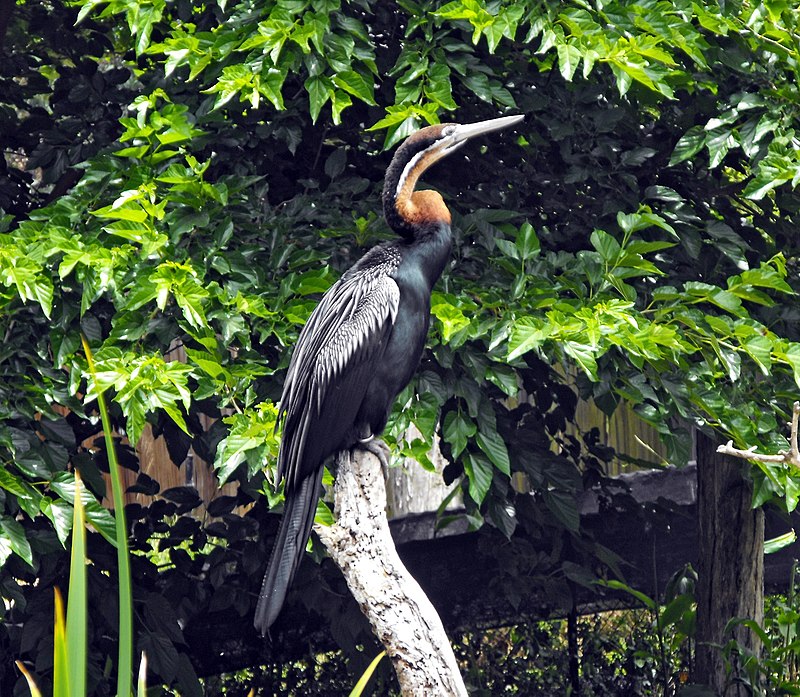
Darters are tropical waterbirds from the family Anhingidae, which includes four species. Three of these species are common and found in multiple locations while one is rarer and classified as near-threatened by IUCN.
Their most notable feature is their long neck which they use to dive into shallow waters for prey such as fish or frogs.
They have a slim body with large wings allowing them to soar high in the sky at great speeds making it difficult for predators to catch them during flight.
Darters also make regular visits to land where they bask in the sun on tree branches or rocky outcroppings.
These birds can be easily identified by their dark feathers, yellowish eyes, and orangey beak – all features that help distinguish them from other birds of similar size and coloration.Scientific classification:
| Kingdom | Animalia |
| Phylum | Chordata |
| Class | Aves |
| Order | Suliformes |
| Family | Anhingidae Reichenbach, 1849[1] |
| Genus | Anhinga Brisson, 1760 |
Also Featured In: Birds of Goa, Common Birds in Kerala
4. Frogmouth
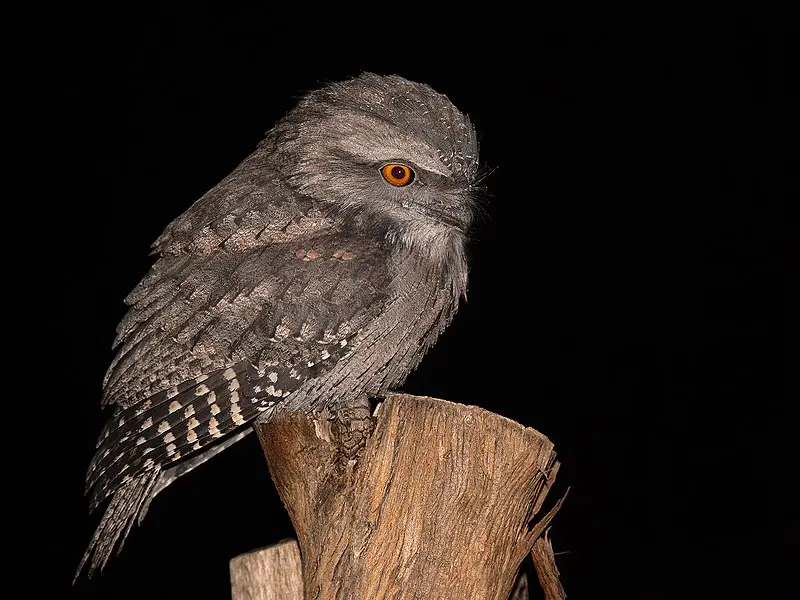
The Frogmouth is a nocturnal bird that belongs to the same family as owlet-nightjars, swifts and hummingbirds.
They have large flattened hooked bills with huge frog-like gape which helps them capture insects during night time.
Three species of Podargus are found in Australia and New Guinea only – they have massive eyes that allow for excellent night vision.
Their bodies are generally grey or brownish in colour with cryptic markings for camouflage when roosting during day light hours.
Generally known as quiet birds, their loud wailing call can be heard at dusk or dawn near river banks or wetlands where they live alone or form pairs throughout breeding season.
The diet of these fascinating creatures consists mainly of flying insects such as moths, beetles & cicadas etc., but on occasion will consume small vertebrates like lizards and frogs too.Scientific classification:
| Kingdom | Animalia |
| Phylum | Chordata |
| Class | Aves |
| Clade | Strisores |
| Order | Podargiformes Matthews, 1918 |
| Family | Podargidae Gray, 1847 |
Also Featured In: Birds of the Philippines, Asian Birds
5. Buttonquail
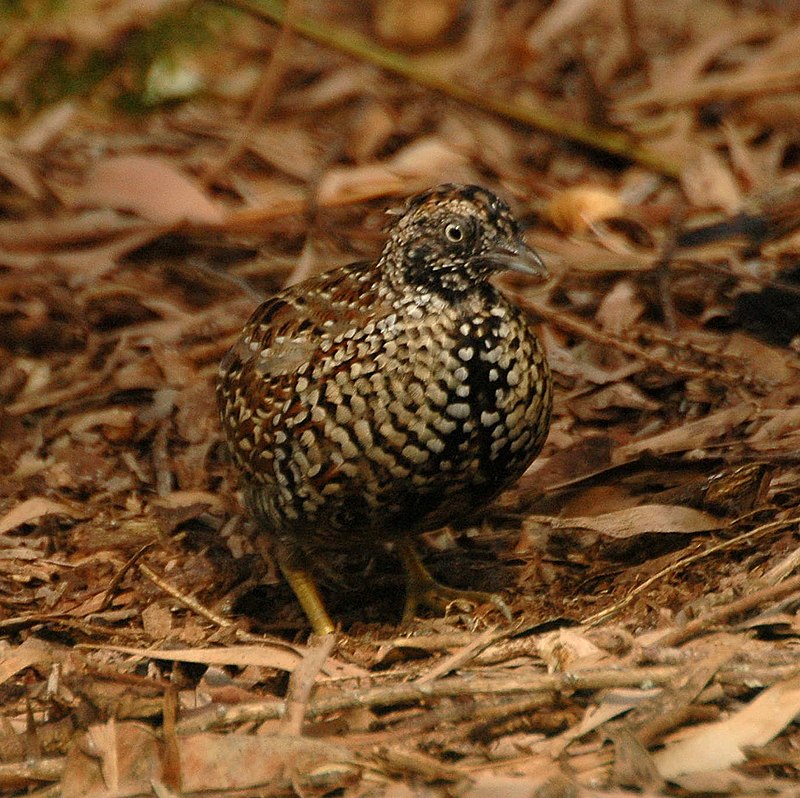
Buttonquails are small, terrestrial birds belonging to the family Turnicidae. They can be found in warm grasslands of Asia, Africa, Europe and Australia.
There are 18 species found across two genera; most being placed under the genus Turnix with a single species known as Ortyxelos.
These birds share a superficial resemblance to quail from Phasianidae but lack any close relation.
Buttonquails avoid flying and instead prefer running on their short legs for navigational purposes.
In terms of physicality they have drab colouring which comprises mostly browns or greys whilst sporting distinctive white patches around their eyes making them easy to identify within dense foliage areas where they usually hide away during times of danger or distress.Scientific classification:
| Kingdom | Animalia |
| Phylum | Chordata |
| Class | Aves |
| Order | Charadriiformes |
| Family | Turnicidae GR Gray, 1840 |
Also Featured In: Birds of Morocco, Most Common Taiwan Birds
6. Australian Magpie
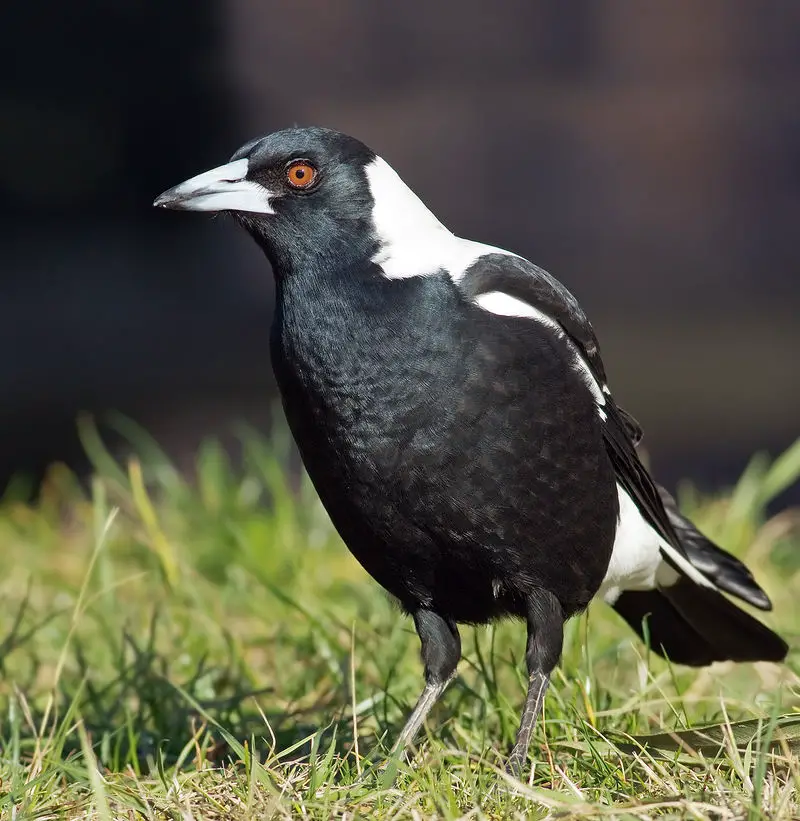
The Australian magpie is a beautiful passerine bird native to Australia and southern New Guinea.
It has distinctive black and white plumage, with males having more brightly coloured feathers than females.
The species is part of the Artamidae family, so it’s closely related to the Black Butcherbird (Melloria quoyi). Nine different subspecies have been recognised which vary slightly in size and colouring.
Magpies are omnivorous birds meaning they eat both plants and animals; their diet consists mainly of insects, small reptiles and amphibians as well as some grains such as wheat or oats.
They also enjoy drinking from pools of water on hot days. In general these birds display high intelligence when compared to other avian species – able to mimic human speech patterns quite accurately even in captivity.
Overall this majestic creature deserves our appreciation for its beauty, loyalty and fascinating behaviour.Scientific classification:
| Kingdom | Animalia |
| Phylum | Chordata |
| Class | Aves |
| Order | Passeriformes |
| Family | Artamidae |
| Genus | Gymnorhina Gray, GR, 1840 |
| Species | G. tibicen |
Also Featured In: Most common birds in Australia, Black And White Birds You Don’t Know About
7. Laughing Kookaburra
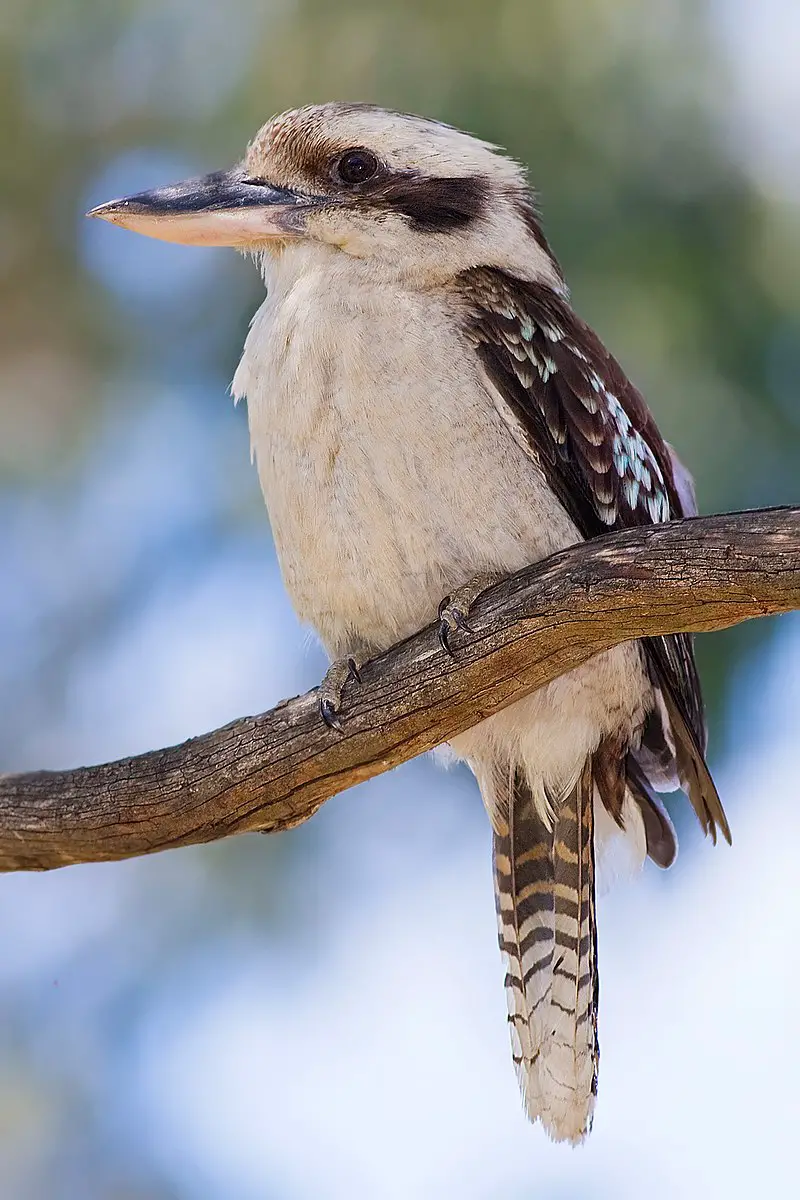
The Laughing Kookaburra is a beautiful bird with distinct features. It has a whitish head and brown eye-stripe, along with an upper body that is predominantly dark brown.
On its wings are mottled light blue patches which make it stand out even more. Its underparts are cream white while its tail is barred in rufous and black colours.
Male and female birds have the same plumage, making them easy to identify as belonging to this species of kingfisher subfamily Halcyoninae.
They can be found living around woodlands or open forests throughout eastern Australia, where they feed on small reptiles, insects or amphibians by swooping down from a perch above them before carrying their prey back up again for consumption.
The sound of their loud distinctive call – “koo-kaa-brrr” – brings joy to many Australians who appreciate these wonderful creatures inhabiting our landScientific classification:
| Kingdom | Animalia |
| Phylum | Chordata |
| Class | Aves |
| Order | Coraciiformes |
| Family | Alcedinidae |
| Subfamily | Halcyoninae |
| Genus | Dacelo |
| Species | D. novaeguineae |
Also Featured In: Birds You’ll Find in Zoo, Birds Typically Found in Australian Rainforest
8. Rainbow Lorikeet
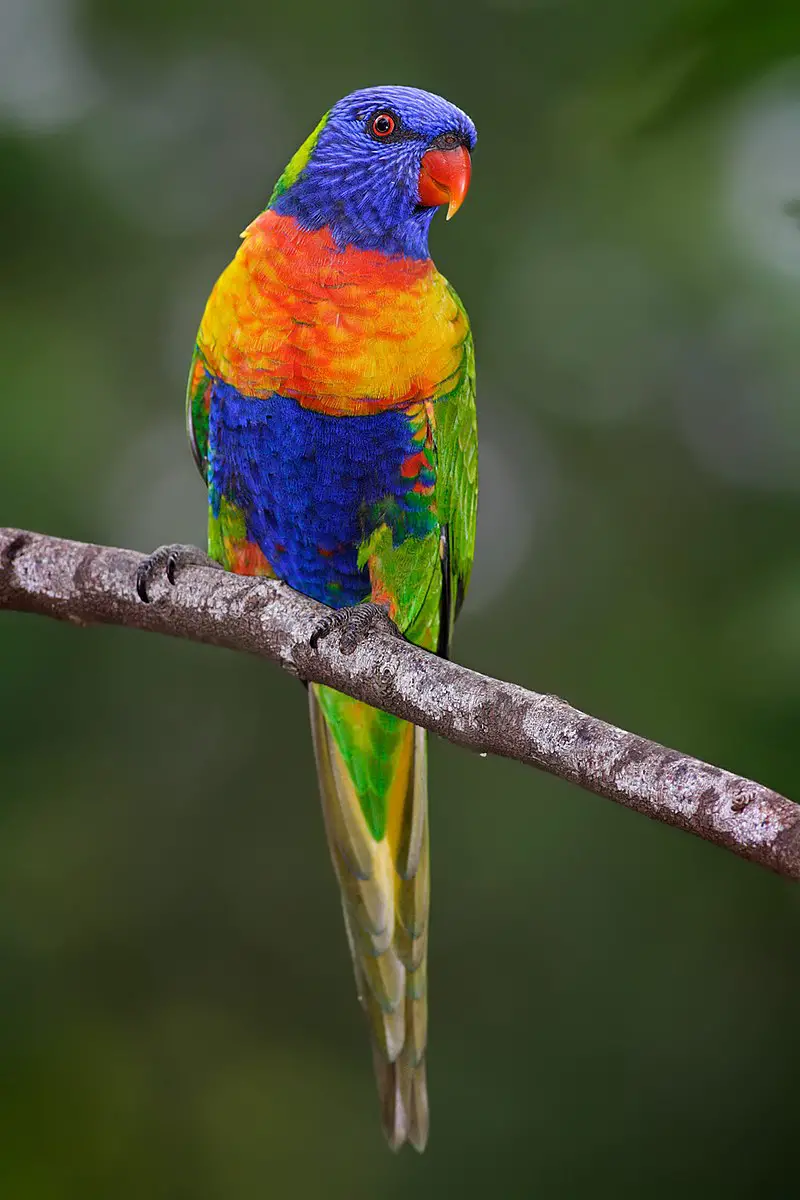
The Rainbow Lorikeet is a brightly coloured parrot native to Australia. It inhabits rainforests, coastal bushlands and woodland areas along the eastern seaboard from northern Queensland to South Australia.
These birds have an unmistakable bright rainbow plumage of blue, red and yellow feathers which make them easy to recognise in their natural environment.
They are also known for their distinctive call – often described as sounding like ‘kikiki-kyu’.
Six related species were once considered subspecies of the Rainbow Lorikeet but these days they are recognised separately due to differences in size, colouration and behaviour.
Despite being introduced elsewhere such as New Zealand, Hawaii or California they remain largely confined within their original range in Australia – where they can be seen soaring through the air or drinking nectar from flowers with its long tongue.Scientific classification:
| Kingdom | Animalia |
| Phylum | Chordata |
| Class | Aves |
| Order | Psittaciformes |
| Family | Psittaculidae |
| Genus | Trichoglossus |
| Species | T. moluccanus |
Also Featured In: Aviary Birds You Should Know,
9. Galah
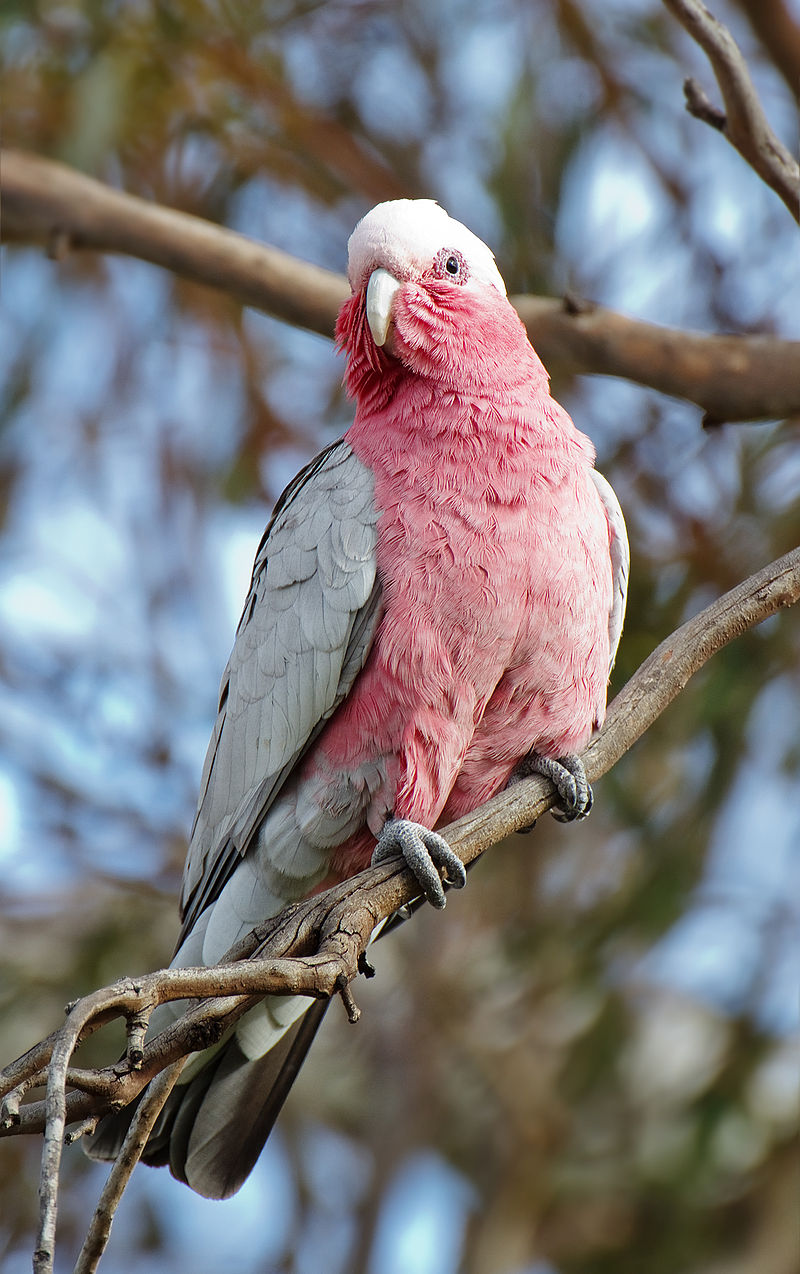
The Galah is a striking bird, easily identified by its distinctive pink and grey plumage. It belongs to the cockatoo family and is found throughout Australia.
With its loud call, it’s not hard to spot this vibrant bird in both rural and urban settings. They are also known as rose-breasted cockatoos due to their bright feathers on their chest.
These birds form strong relationships with each other, living together in pairs or small groups while they look for food among grasslands or open woodlands.
Their diet consists of seeds, fruits, buds & flowers making them valuable contributors to ecosystems across the country.Scientific classification:
| Kingdom | Animalia |
| Phylum | Chordata |
| Class | Aves |
| Order | Psittaciformes |
| Family | Cacatuidae |
| Genus | Eolophus Bonaparte, 1854 |
| Species | E. roseicapilla |
10. Sulphur-Crested Cockatoo
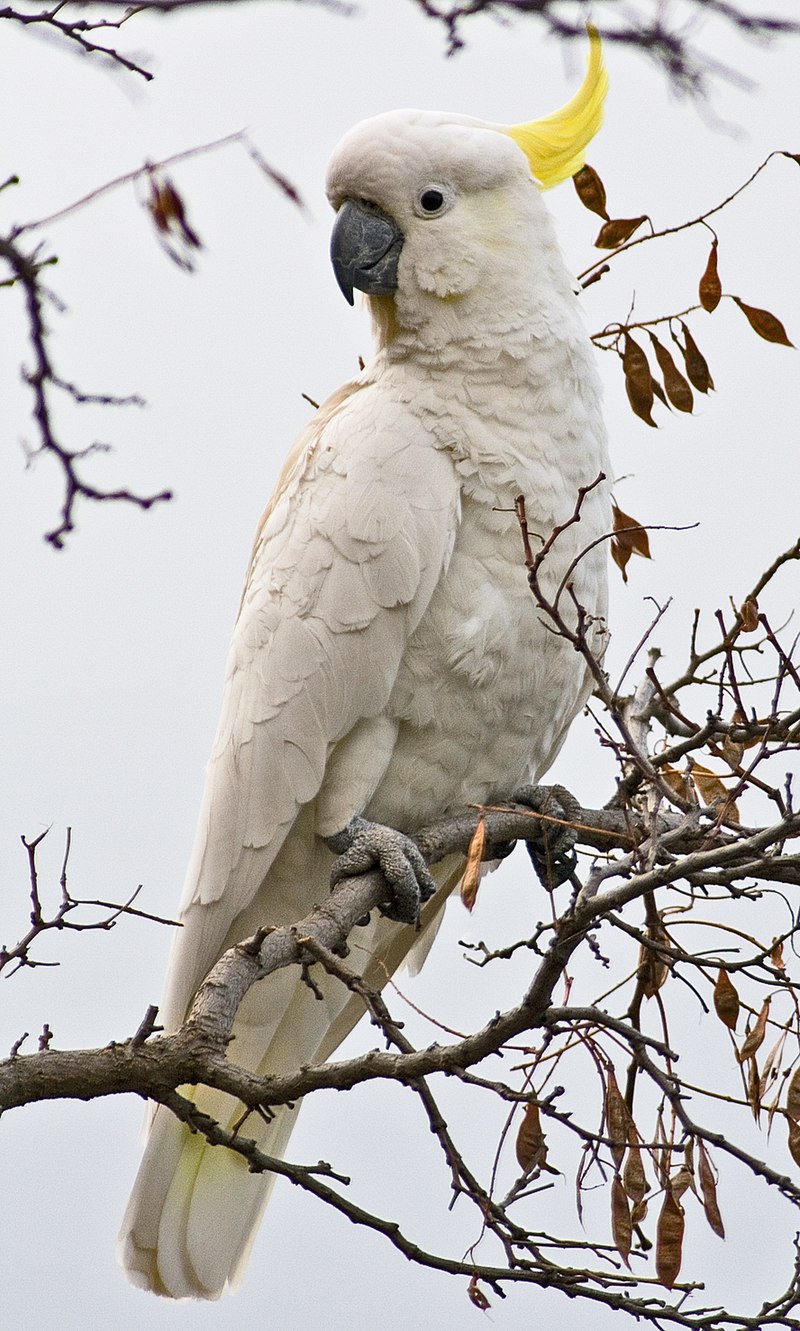
The Sulphur-crested Cockatoo (Cacatua galerita) is a white, relatively large cockatoo native to Australia, New Guinea and some of the islands in Indonesia.
They are highly intelligent birds with distinctive yellow crests on their heads.
These beautiful creatures can be found living in wooded habitats where they often form large flocks that sometimes cause problems as they become pests.
In aviculture, these parrots are very popular due to their intelligence and lively nature but it should be noted that they require an experienced birdkeeper or owner to properly take care of them since they can also be quite demanding pets at times.
All in all though, the Sulphur-crested Cockatoos remain one of the most beloved species among bird enthusiasts around the world.Scientific classification:
| Kingdom | Animalia |
| Phylum | Chordata |
| Class | Aves |
| Order | Psittaciformes |
| Family | Cacatuidae |
| Genus | Cacatua |
| Subgenus | Cacatua |
| Species | C. galerita |
11. Superb Fairywren
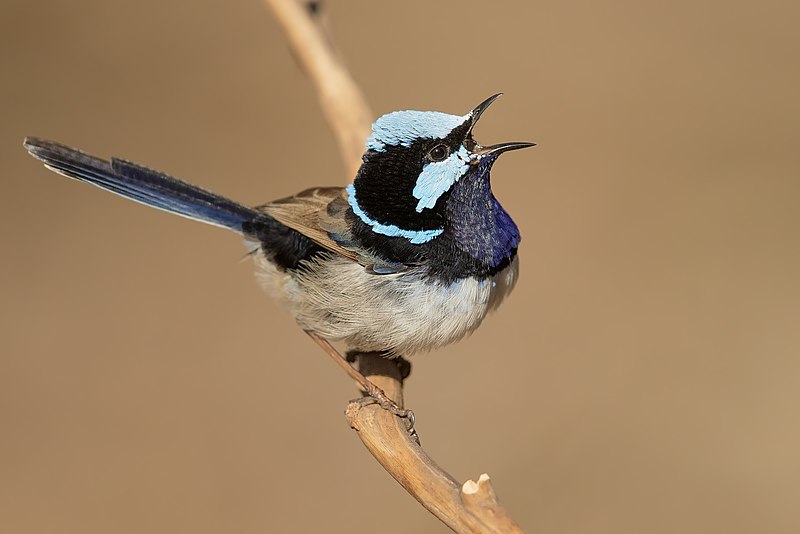
The Superb Fairywren is a beautiful and unique bird native to southeastern Australia.
The male in breeding plumage has an impressive bright blue forehead, ear coverts, mantle and tail with a black mask and either black or dark blue throat.
They are sedentary birds that form strong territorial bonds with their mates; the males staying close-by while the females build nests away from them.
These birds exhibit high sexual dimorphism; making it easy for us to distinguish between males and females of this species.
Their diet consists primarily of insects although they will also feed on other invertebrates as well as nectar, fruit and seeds when available.
This small passerine bird is sure to bring any garden alive with its vibrant colours.Scientific classification:
| Kingdom | Animalia |
| Phylum | Chordata |
| Class | Aves |
| Order | Passeriformes |
| Family | Maluridae |
| Genus | Malurus |
| Species | M. cyaneus |
12. Wedge-Tailed Eagle
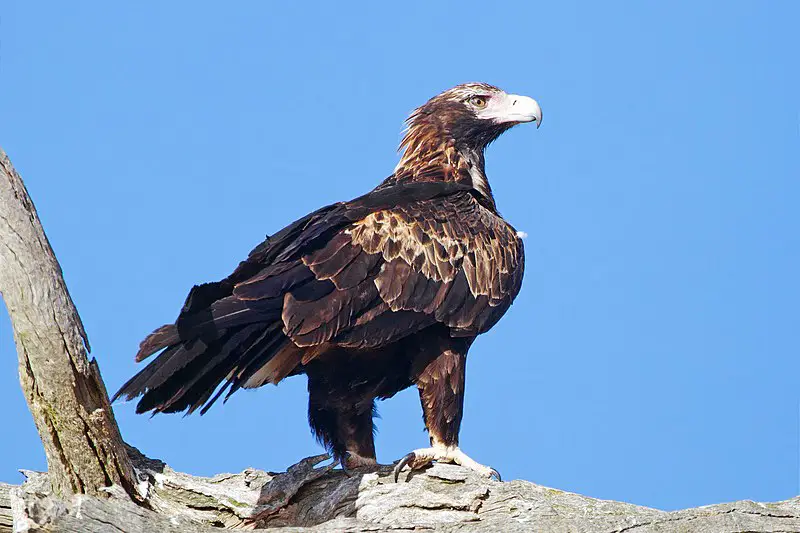
The majestic Wedge-tailed Eagle is a sight to behold in the skies above Australia, New Guinea and Tasmania.
With its long broad wings, fully feathered legs, distinctive wedge-shaped tail and powerful beak and feet it stands out from other birds of prey with ease.
This large raptor has an impressive wingspan ranging between 1.8m – 2.3m for males while females are slightly larger at up to 2.6m wide.
Its diet mainly consists of carrion but they have also been known to hunt for rabbits or small mammals such as rock wallabies when food is scarce due their sharp talons that can easily tear apart their prey’s flesh with one swift movement.
Despite being listed as near threatened these beautiful creatures still remain fairly common throughout its range making them a true delight to see soaring through our Aussie skies.Scientific classification:
| Kingdom | Animalia |
| Phylum | Chordata |
| Class | Aves |
| Order | Accipitriformes |
| Family | Accipitridae |
| Genus | Aquila |
| Species | A. audax |
Also Featured In: Most Common Birds in Oceania,
13. Malleefowl
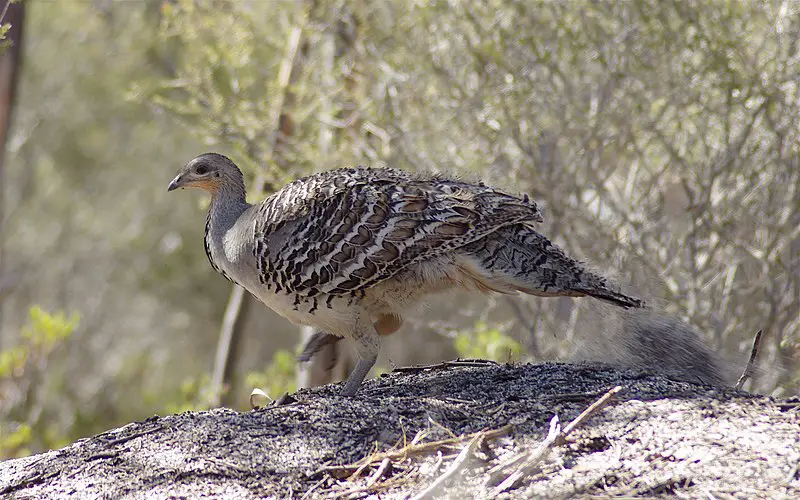
Malleefowl are native to Australia and resemble a domestic chicken in size. They prefer open woodlands or grassy plains with plenty of shrubs for cover.
These birds live on the ground and almost never fly, but their strong legs allow them to run quickly over short distances.
The males build large nesting mounds every year where they lay eggs which hatch without parental care from either parent.
Though only one species of malleefowl still exists today, its close relative was once much larger before becoming extinct.
This unique bird is an important part of Australia’s wildlife heritage that should be protected and appreciated by all Australians.Scientific classification:
| Kingdom | Animalia |
| Phylum | Chordata |
| Class | Aves |
| Order | Galliformes |
| Family | Megapodiidae |
| Genus | Leipoa Gould, 1840 |
| Species | L. ocellata |
14. Noisy Miner
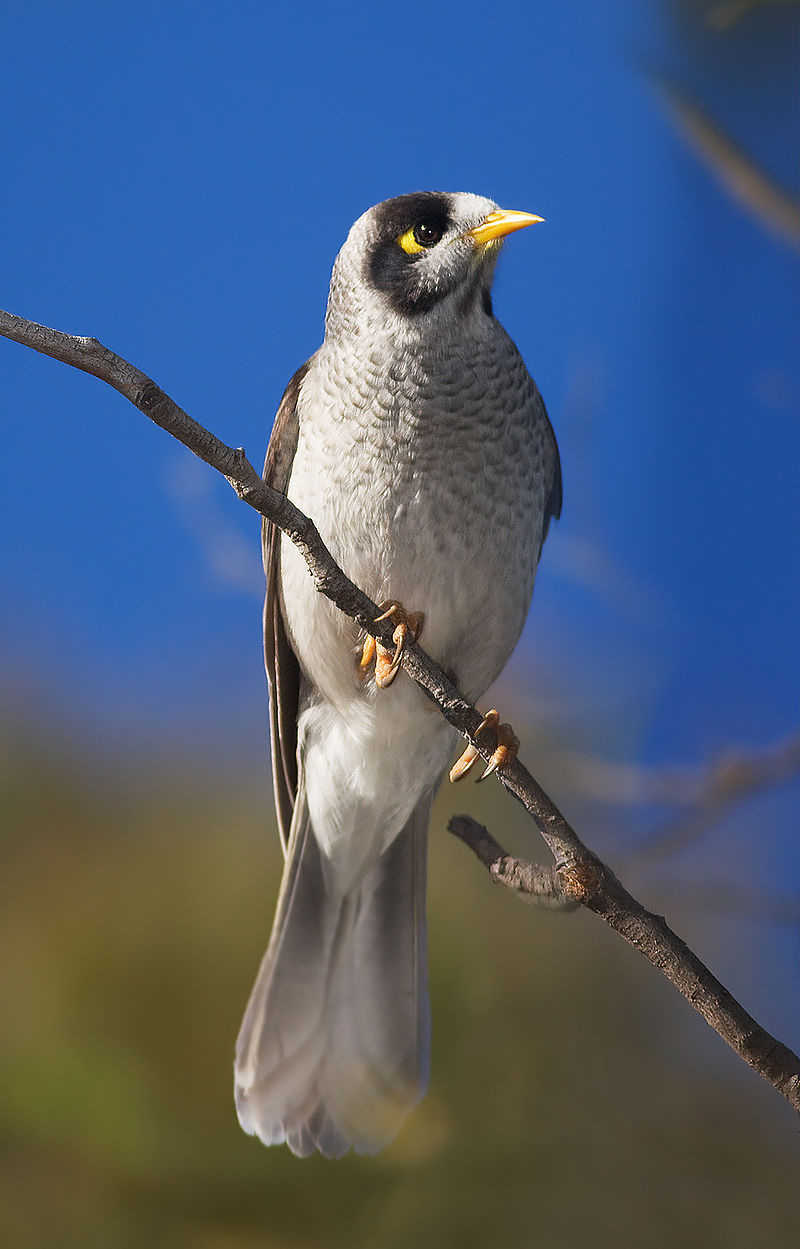
The Noisy Miner is a beautiful bird native to eastern and southeastern Australia. It has a grey body, black head, orange-yellow beak and feet, with an eye patch that ranges from yellow to more intense in Tasmanian birds.
The tail feathers are distinguished by white tips which provide it with its signature look. These miners have the ability to produce loud calls when communicating or defending their territory – hence their name.
They mainly feed on fruit but also insects, nectar and small lizards found around gardens.
As they are quite common in urban areas of Australia, these birds make for some delightful avian visitors.Scientific classification:
| Kingdom | Animalia |
| Phylum | Chordata |
| Class | Aves |
| Order | Passeriformes |
| Family | Meliphagidae |
| Genus | Manorina |
| Species | M. melanocephala |
15. New Holland Honeyeater
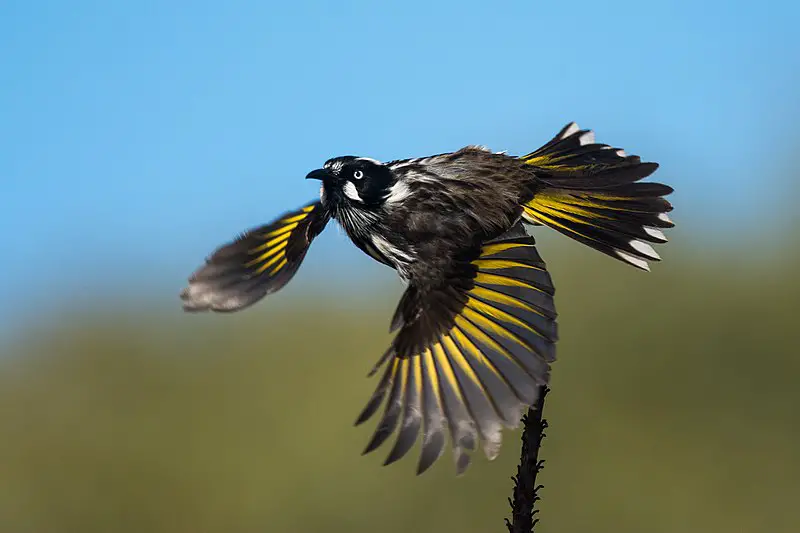
The New Holland honeyeater is a distinctive bird found in southern Australia. It has five subspecies and measures 18 cm long, with mainly black feathers contrasting against its white eyes.
This species was among the first to be scientifically described in Australia, known as Certhia novaehollandiae at that time.
These birds are very active and can often be seen searching for food or bathing on hot days near water sources such as streams or lakes.
They have an impressive range of vocalizations which they use to communicate with each other when looking for mates or defending their territories from intruders.
The New Holland Honeyeaters feed primarily on nectar but also consume insects, lizards, spiders and seeds when available throughout the year – making them essential pollinators within Australian ecosystems.Scientific classification:
| Kingdom | Animalia |
| Phylum | Chordata |
| Class | Aves |
| Order | Passeriformes |
| Family | Meliphagidae |
| Genus | Phylidonyris |
| Species | P. novaehollandiae |
16. Major Mitchell’s Cockatoo
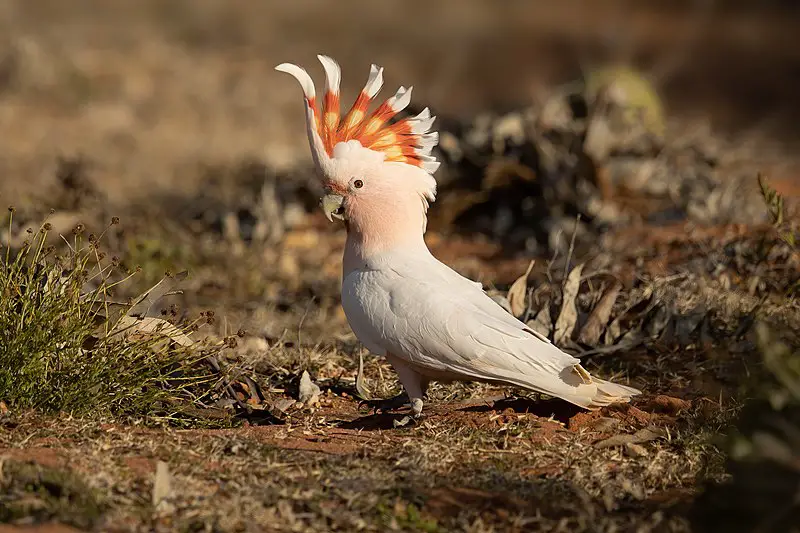
The Major Mitchell’s cockatoo is a medium-sized bird native to arid and semi-arid regions of Australia. It has been seen in other climates, such as South-East Queensland’s subtropical region.
The species was first described by Irish naturalist Nicholas Aylward Vigors in 1831 under the name Plyctolophus leadbeateri.
This pink cockatoo has distinctive grey downy feathers on its back and wings which contrast with its snowy white head, chest and tail feathers.
Its red crest stands out against the otherwise monochrome body when it spreads open during displays of excitement or aggression.
Despite being quite rare, these birds are hardy survivors that can live up to 80 years if given proper care and nutrition.Scientific classification:
| Kingdom | Animalia |
| Phylum | Chordata |
| Class | Aves |
| Order | Psittaciformes |
| Family | Cacatuidae |
| Genus | Lophochroa Bonaparte, 1857 |
| Species | L. leadbeateri |
Also Featured In: Famous Paintings Birds,
17. Pacific Gull
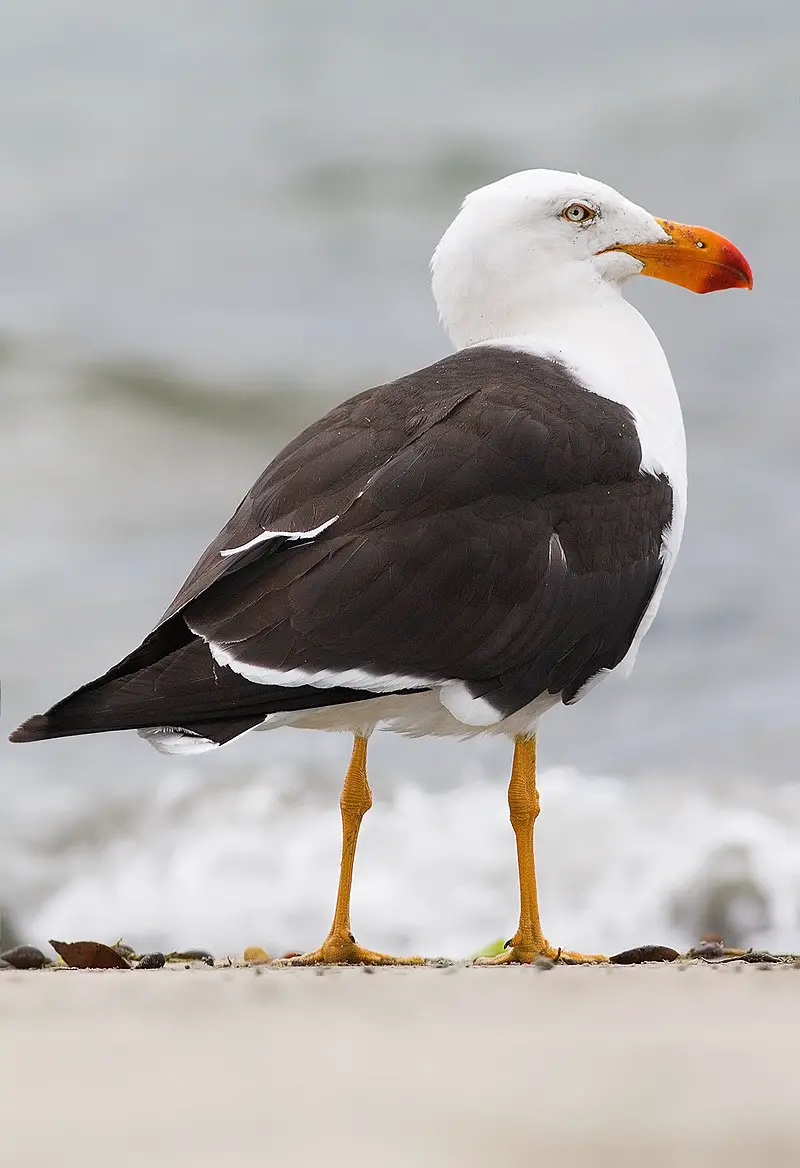
The Pacific gull is a majestic species of bird, native to the coasts of Australia. It stands out among other birds due to its size; it’s much larger than the ubiquitous silver gull and can reach up to 70cm when fully grown.
Unfortunately, this magnificent species has become scarce in some areas of south-east Australia as a result of competition from kelp gulls that were introduced during the 1940s.
Despite their decline in certain areas, these amazing creatures are still moderately common between Carnarvon and Sydney.
With white plumage on top, grey wings and black legs they make for quite an impressive sight.Scientific classification:
| Kingdom | Animalia |
| Phylum | Chordata |
| Class | Aves |
| Order | Charadriiformes |
| Family | Laridae |
| Genus | Larus |
| Species | L. pacificus |
18. Crimson Rosella
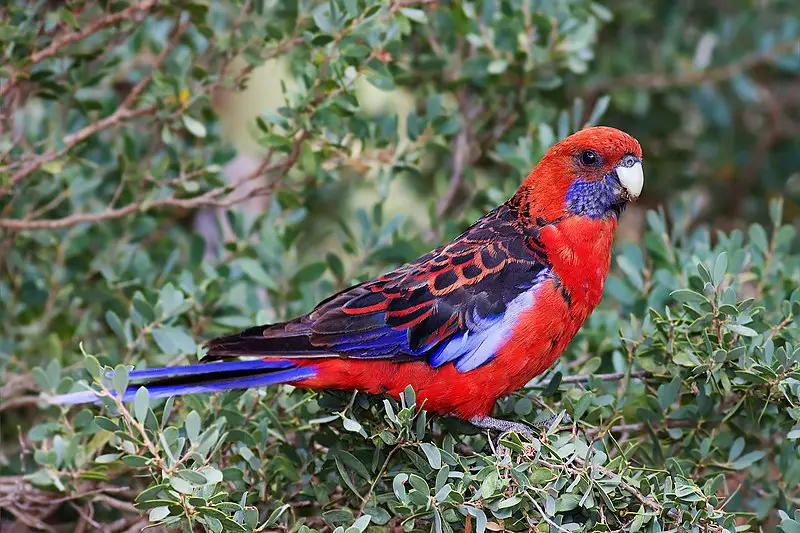
The Crimson Rosella is a beautiful parrot native to eastern and south eastern Australia which has been introduced to New Zealand and Norfolk Island.
It lives in mountain forests, gardens, woodlands or other open habitats such as farmland with trees.
This species was created when two separate species- the Yellow Rosella and Adelaide Rosella were combined together due to molecular studies showing them being closely related.
The Crimson Rosellas have bright red feathers on their wings and back with blue cheeks, forehead & tail while its underbelly is yellowish orange in colour.
They also have black bars across each wing & white patches near their tails making them an attractive sight for bird watchers.Scientific classification:
| Kingdom | Animalia |
| Phylum | Chordata |
| Class | Aves |
| Order | Psittaciformes |
| Family | Psittaculidae |
| Genus | Platycercus |
| Species | P. elegans |
19. Cuckooshrike
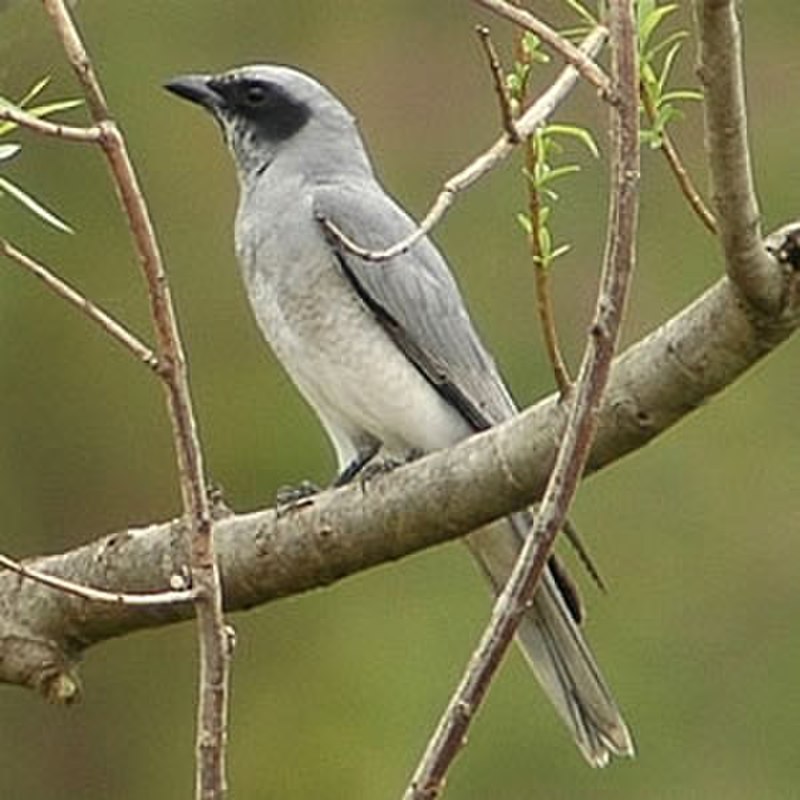
Cuckooshrikes are small to medium-sized passerine birds found mainly in the subtropical and tropical regions of Africa, Asia, and Australasia. They are usually arboreal, feeding on insects or fruit near foliage.
They have a stout bill with long wings and tails that can be used for balancing while perched on branches.
Cuckooshrike plumage is mostly grayish brown but some species may also feature black spots or stripes. The juvenile cuckooshrikes typically show more yellowish coloration than adults do.
These birds form monogamous pairs which often remain together year round defending their territory from other species as well as potential rivals within their own family group.Scientific classification:
| Kingdom | Animalia |
| Phylum | Chordata |
| Class | Aves |
| Order | Passeriformes |
| Infraorder | Corvides |
| Family | Campephagidae Vigors, 1825 |
Also Featured In: Top Birds of Rwanda, Birds that Live in Tamil Nadu
20. Megapode
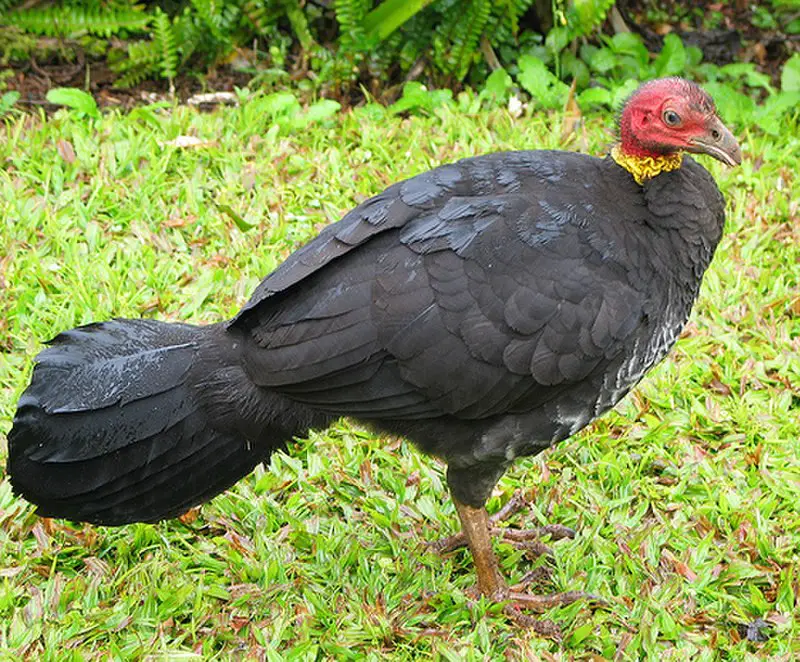
Megapodes are a unique family of birds with large feet and small heads. They measure from medium-large in size, similar to chickens, and have either brown or black feathers covering their bodies.
These terrestrial creatures live mainly in wooded areas where they browse for food like fruits and insects.
With the exception of the Malleefowl species, all Megapodes build mounds which act as incubators for them to lay eggs on – hence why they’re also known as “incubator birds”.
Thanks to this adaptation, these unusual animals can survive extreme temperatures by relying on heat generated from composting material beneath them instead of sitting directly atop their eggs.Scientific classification:
| Kingdom | Animalia |
| Phylum | Chordata |
| Class | Aves |
| Order | Galliformes |
| Family | Megapodiidae Lesson, 1831 |
Also Featured In: Papua New Guinea birds, Guam Birds You Need to See
21. Silvereye
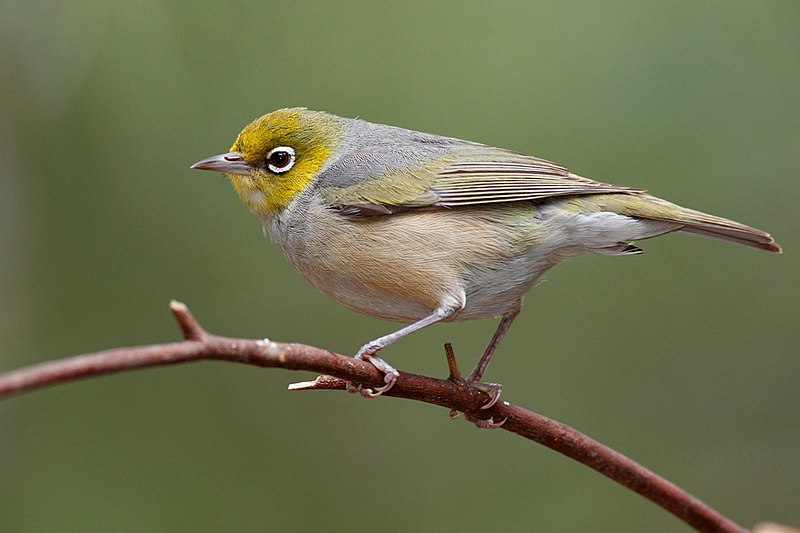
The silvereye, also known as wax-eye, is a tiny passerine bird native to the south-west Pacific region. It was first recorded in New Zealand in 1832 and there were greater numbers by 1856.
These birds are omnivorous feeders that make their home in open woodlands or gardens with lush vegetation.
Their plumage has greyish tones on top of its head and wings giving it a silver sheen look which inspired its common name ‘silvereye’.
The underside of these birds have white feathers allowing for camouflage among foliage when they fly low over shrubs and trees seeking food such as nectar, insects and fruit.
They are social creatures who often flock together to share meals while communicating through their unique chirps.Scientific classification:
| Kingdom | Animalia |
| Phylum | Chordata |
| Class | Aves |
| Order | Passeriformes |
| Family | Zosteropidae |
| Genus | Zosterops |
| Species | Z. lateralis |
Also Featured In: New Zealand Birds, Silver Birds You Should Know
22. Cape Barren Goose
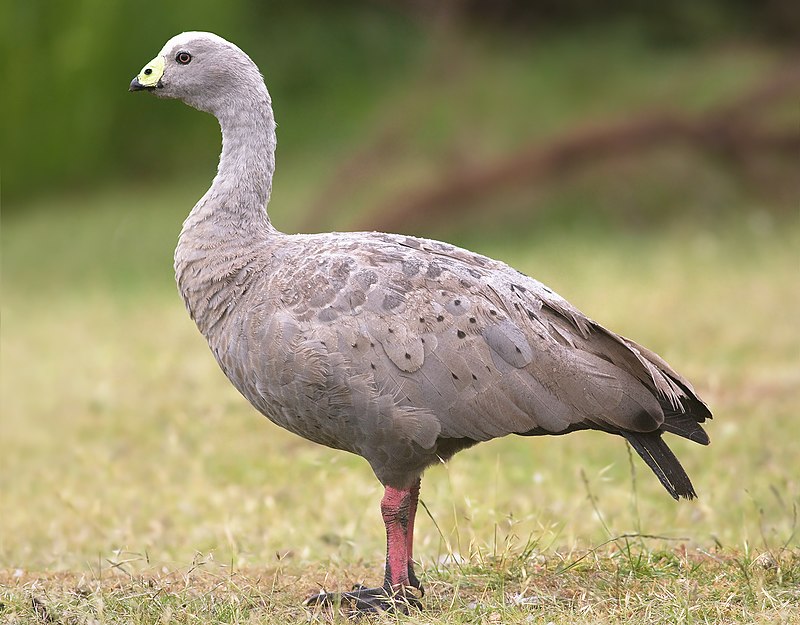
The Cape Barren goose is a large species of bird native to southern Australia. Its name derives from the Cape Barren Island, where it was first sighted by European explorers in 1801.
This goose belongs to the Jardwadjali language and is known as toolka there. It has an eye-catching plumage with greyish-brown feathers on its body and wings, while its head appears black or brownish.
The neck sports white stripes which look like arrowheads when seen up close, adding beauty to this majestic looking creature.
They feed mainly on grasses but also consume other vegetation such as seaweed and eelgrass during their migration season in summertime.
These geese are gregarious birds that live together in flocks for protection against predators.
To conclude, these magnificent creatures can be found all across southern Australian regions – making them truly one of nature’s wonders.Scientific classification:
| Kingdom | Animalia |
| Phylum | Chordata |
| Class | Aves |
| Order | Anseriformes |
| Family | Anatidae |
| Subfamily | Anserinae |
| Genus | Cereopsis Latham, 1801 |
| Species | C. novaehollandiae |
23. Red-Capped Plover
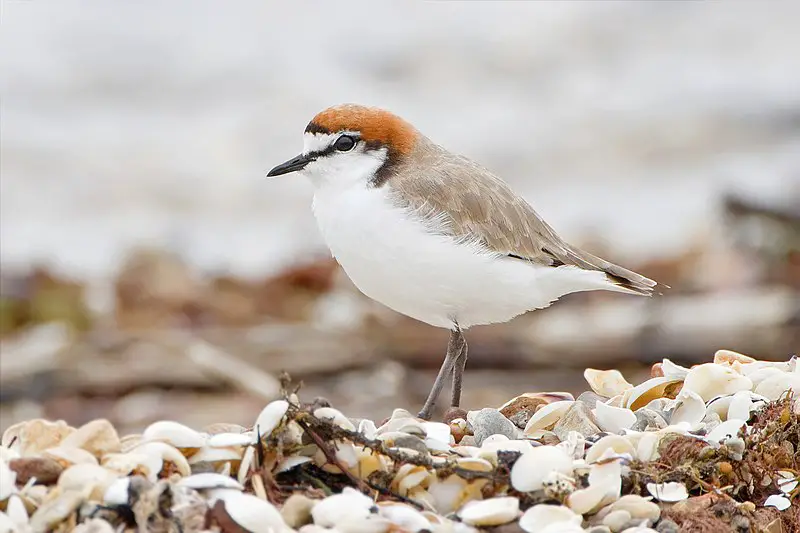
The Red-capped Plover, also known as the Red-capped Dotterel, is a small species of plover that breeds in Australia. It has a white forehead and underparts with grey-brown upperparts.
Adult males have a rust red crown on their heads while females lack this feature but still have some brown coloration across the nape of their necks.
The wings are blackish with bright yellow margins while they possess faint streaks underneath them.
Their long legs are grey or greenish in color and they usually run rather than fly when flushed from cover.
They feed mainly on insects which they hunt by wading through shallow water or probing soft mudflats for food items like worms and crustaceans.Scientific classification:
| Kingdom | Animalia |
| Phylum | Chordata |
| Class | Aves |
| Order | Charadriiformes |
| Family | Charadriidae |
| Genus | Charadrius |
| Species | C. ruficapillus |
Also Featured In: Timor-Leste birds,
24. Dusky Moorhen
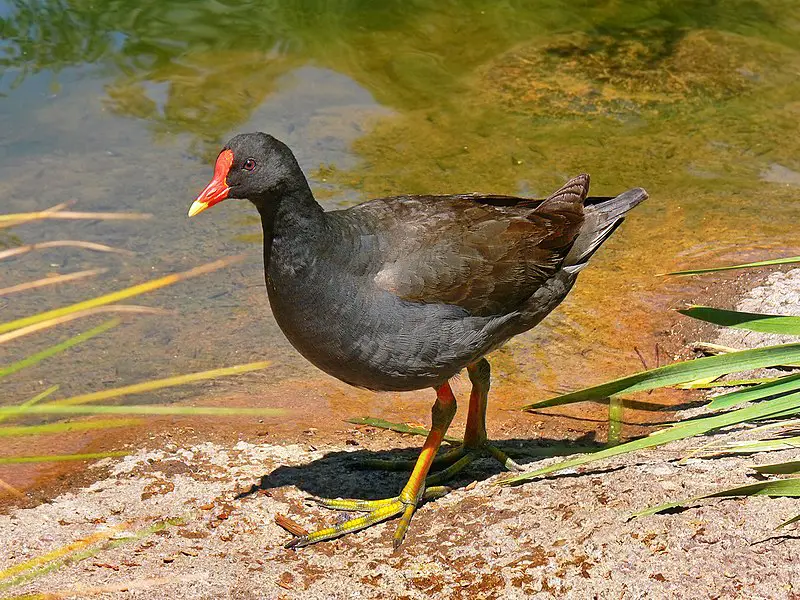
The dusky moorhen is a species of bird found in India, Australia, New Guinea, Borneo and Indonesia. It has dark plumage with an iridescent green sheen on its back and wings.
Its beak and legs are yellow-orange in color. The tail is long and pointed. Dusky moorhens live around freshwater wetlands such as swamps or ponds where they feed largely on aquatic vegetation but may also eat small insects or fish if available.
They often live alongside other birds from the same genus like purple swamphens or Eurasian coots which have similar appearances but different habitats preferences than their own species’.
Although timid when approached by humans these birds still make fascinating subjects for observation due to their unique behaviors within family groups that can help us understand more about them.Scientific classification:
| Kingdom | Animalia |
| Phylum | Chordata |
| Class | Aves |
| Order | Gruiformes |
| Family | Rallidae |
| Genus | Gallinula |
| Species | G. tenebrosa |
25. Brown Goshawk
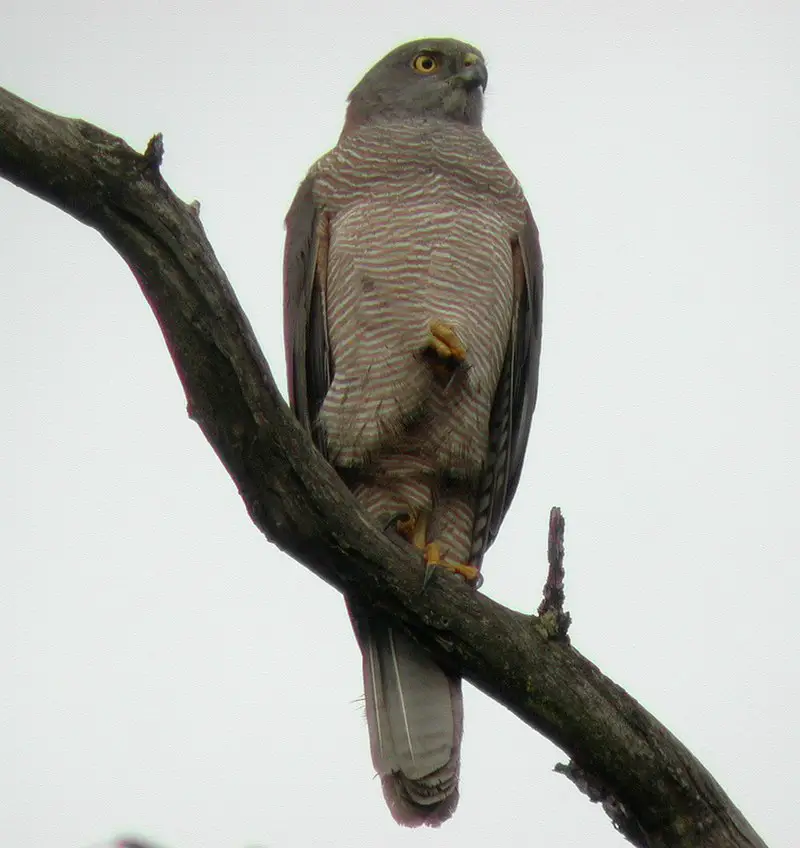
The Brown Goshawk is a medium-sized bird of prey that can be found in Australia and its surrounding islands.
It has grey upperparts with chestnut collar, while the underparts are mainly rufous finely barred with white.
This gives it similar colouring to collared sparrowhawk but it is larger as compared to them; body length being between 40-55 cm.
The flight of this majestic raptor is fast and flexible making for an impressive sight when spotted in the sky.
Its diet consists mostly of small birds, mammals such as rodents or bats, large insects like grasshoppers etc., thus playing an important role in maintaining balance within local ecosystems by controlling population numbers these species.Scientific classification:
| Kingdom | Animalia |
| Phylum | Chordata |
| Class | Aves |
| Order | Accipitriformes |
| Family | Accipitridae |
| Genus | Accipiter |
| Species | A. fasciatus |
Also Featured In: Vanuatu birds,
26. Nankeen Kestrel
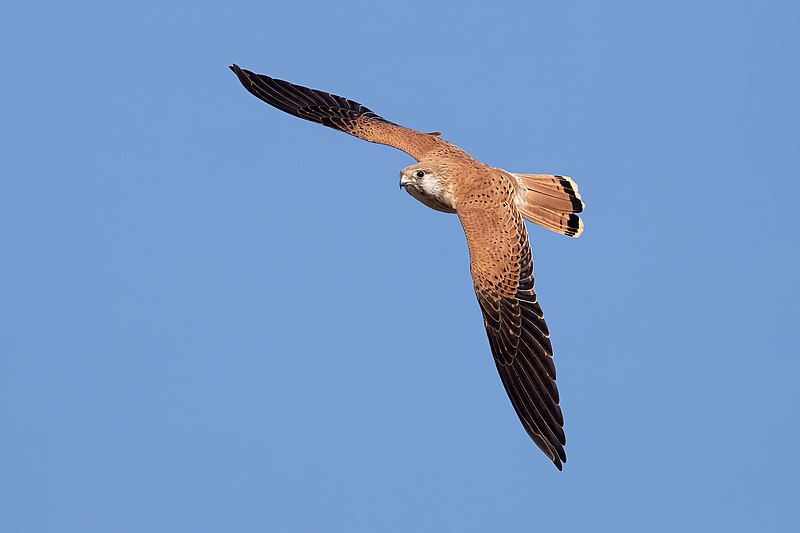
The nankeen kestrel is a small bird of prey native to Australia and New Guinea. Unlike many raptors, it does not rely on speed to capture its prey; instead, it perches in an exposed spot or hovers over fields and grasslands.
It belongs to the genus Falco which also includes other species such as peregrine falcons.
This bird typically has cinnamon-brown upperparts with dark wings and tail whilst its underside is usually pale buffish-white colouring with narrow black barring across the chest area.
Its diet consists mainly of insects but can include reptiles, amphibians, mice and even some birds among others depending on their availability within their habitat range.
The Nankeen Kestrel is an important part of our ecosystems providing essential services such as pest control for farmers by preying upon pests like locusts while also being a keystone species that influences surrounding habitats through predation or competition for resources amongst other animals.Scientific classification:
| Kingdom | Animalia |
| Phylum | Chordata |
| Class | Aves |
| Order | Falconiformes |
| Family | Falconidae |
| Genus | Falco |
| Species | F. cenchroides |
Also Featured In: Christmas Island Birds,
27. Silver Gull

The Silver Gull is a common sight in Australia, especially along the coastlines. It’s smaller than the Pacific Gull and has silver-grey wings with white head and underparts.
Its scientific name is Chroicocephalus novaehollandiae, but it shouldn’t be confused with the Herring Gull which is also called “Silver Gull” in many other languages (Larus argentatus).
During summer months these birds can often be seen around fishing boats scavenging for discarded food or flying low over city parks looking for handouts from humans.
They are highly adaptable to their environment making them quite successful at coexisting near human populations.
These Australian seabirds have been known to live up to 25 years old.Scientific classification:
| Kingdom | Animalia |
| Phylum | Chordata |
| Class | Aves |
| Order | Charadriiformes |
| Family | Laridae |
| Genus | Chroicocephalus |
| Species | C. novaehollandiae |
Also Featured In: Gulls Species, Birds that Live around Brisbane
28. Australian Boobook
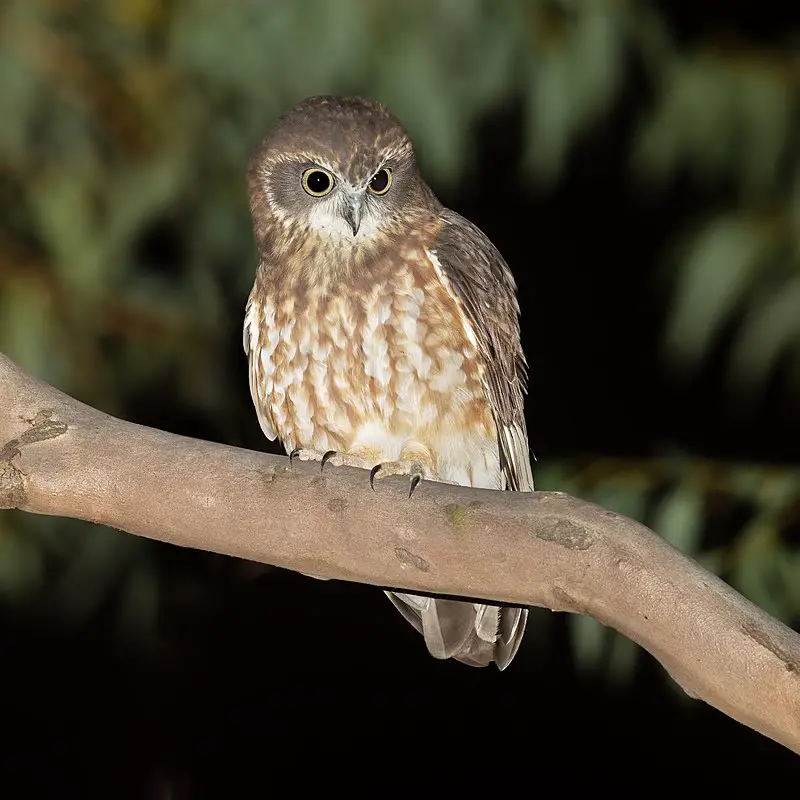
The Australian boobook is a small owl species native to Australia, New Guinea, Timor and the Sunda Islands.
It derives its name from its distinct two-tone “boo-book” call which can be heard at dusk or during the night.
This nocturnal bird has eight subspecies that vary in size and plumage colouration across their range.
Generally they have mottled greyish brown feathers on top with pale underparts covered by dark streaks and spots; while some of these birds also feature white facial discs around their eyes.
The Australian boobook often hunts for earthworms, insects, lizards or frogs near open areas such as grasslands, woodlands or urban gardens – typically roosting in trees during the day to avoid predators.Scientific classification:
| Kingdom | Animalia |
| Phylum | Chordata |
| Class | Aves |
| Order | Strigiformes |
| Family | Strigidae |
| Genus | Ninox |
| Species | N. boobook |
Also Featured In: Owls Species,
29. Yellow-Tailed Black Cockatoo
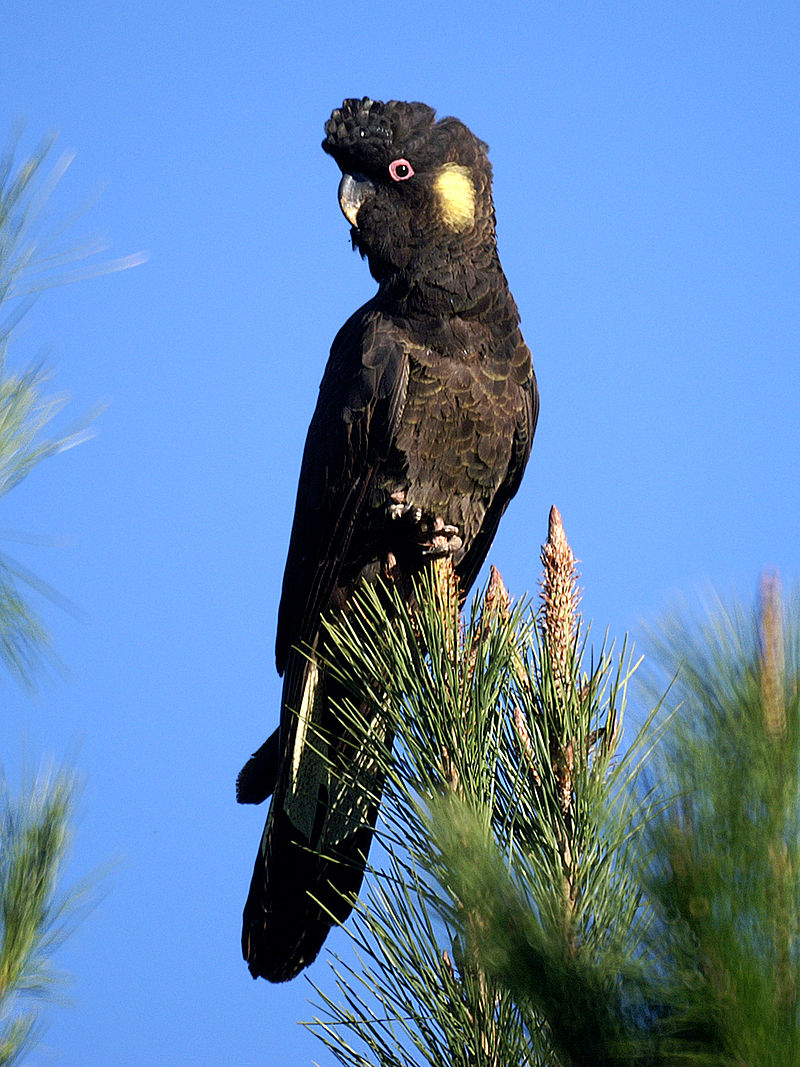
The Yellow-tailed Black Cockatoo is a beautiful bird native to Australia. It measures 55–65 cm in length and has an unmistakable look with its brownish black plumage, yellow cheek patches, short crest on the top of its head and prominent yellow tail band.
The feathers are also edged with yellow giving it a unique scalloped appearance. Males have a striking black beak while females have pink beaks with grey tips – making them easy to tell apart at first glance.
They prefer woodlands but can sometimes also be seen near urban areas as well as open grassy woodlands or forests where they feed on seeds from eucalypts, acacias and banksias among other plants.
They make loud screeching noises when flying which makes them easily identifiable even from afar.Scientific classification:
| Kingdom | Animalia |
| Phylum | Chordata |
| Class | Aves |
| Order | Psittaciformes |
| Family | Cacatuidae |
| Genus | Zanda |
| Species | Z. funerea |
Also Featured In: Parrots Species, Birds that Live around Victoria
30. Australian Pied Cormorant
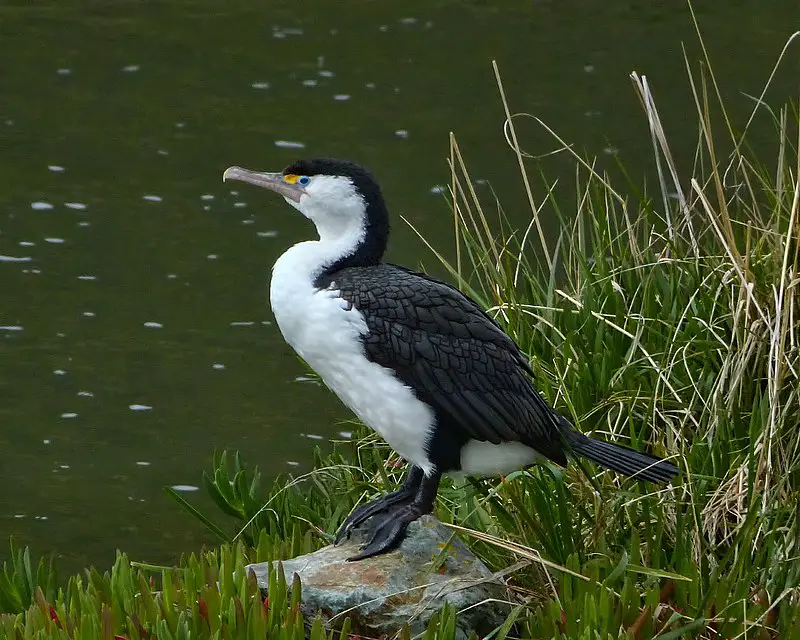
The Australian pied cormorant is a medium-sized member of the cormorant family and can be found around the coasts of Australasia.
It’s distinctive plumage features black feathers on its head, back, wings and tail with some white patches in between.
Its face has yellow skin that becomes bright orange when breeding season begins. The bird uses it’s webbed feet to swim through water searching for food such as fish or small crustaceans which make up most of their diet.
They often hunt by diving underwater from where they can stay submerged for about 30 seconds before resurfacing again for air.
During these dives they are able to travel depths up to 15 meters down.
This species also forms colonies when mating season comes around and will nest together in tall trees near shorelines or other bodies of water so that fishing is easier within reach during this time period every year.Scientific classification:
| Kingdom | Animalia |
| Phylum | Chordata |
| Class | Aves |
| Order | Suliformes |
| Family | Phalacrocoracidae |
| Genus | Phalacrocorax |
| Species | P. varius |
Also Featured In: Cormorant Species, Common Melbourne Birds
31. Little Black Cormorant
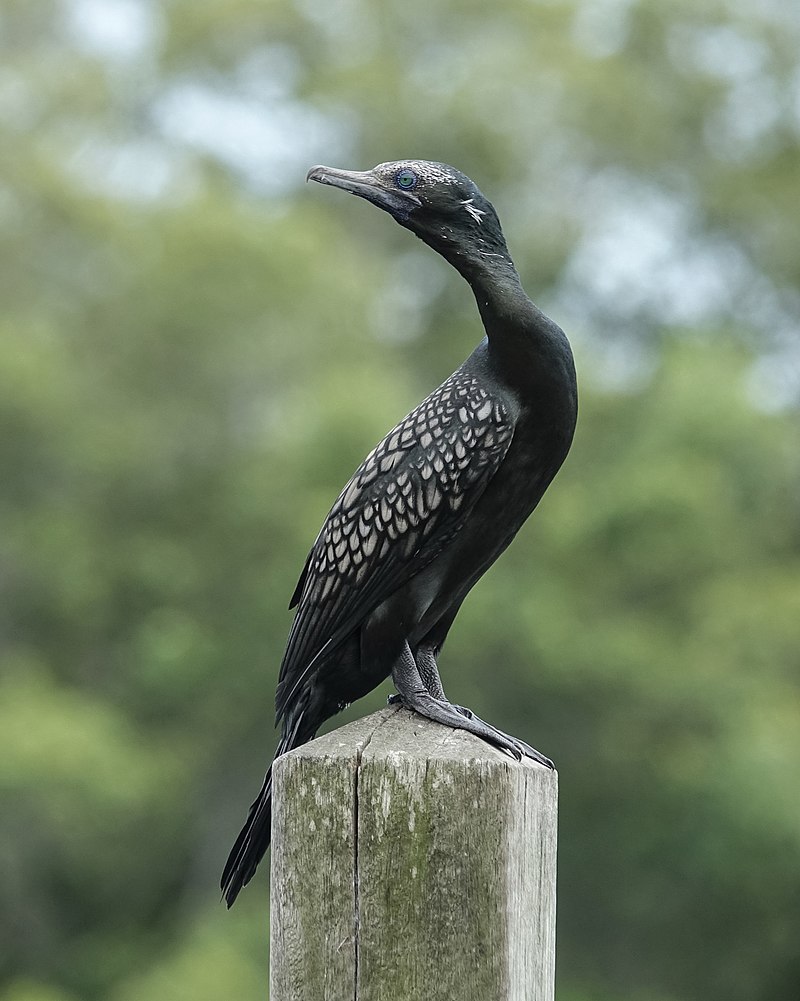
The little black cormorant is a small seabird of the cormorant family that is commonly found in rivers, lakes and coastal areas throughout Australia and New Zealand.
It has an all-black colouring with blue-green eyes and grows to about sixty centimetres long. This species was formally described by German ornithologist Johann Jakob Kaup in 1837 as Phalacrocorax sulcirostris.
The little black cormorant feeds on insects, fish and crustaceans which it captures underwater, diving up to two metres deep for around twenty seconds at a time.
They are known for their large breeding colonies where they build nests out of twigs or seaweed near water bodies like sandbanks or rocky cliffsides.
Little black cormorants can also be seen perching atop rocks drying off after swimming or preening themselves while perched low over the water’s surface.Scientific classification:
| Kingdom | Animalia |
| Phylum | Chordata |
| Class | Aves |
| Order | Suliformes |
| Family | Phalacrocoracidae |
| Genus | Phalacrocorax |
| Species | P. sulcirostris |
Also Featured In: Sydney Birds You Need to See, Native Birds Of Mackay
32. Fairy Tern
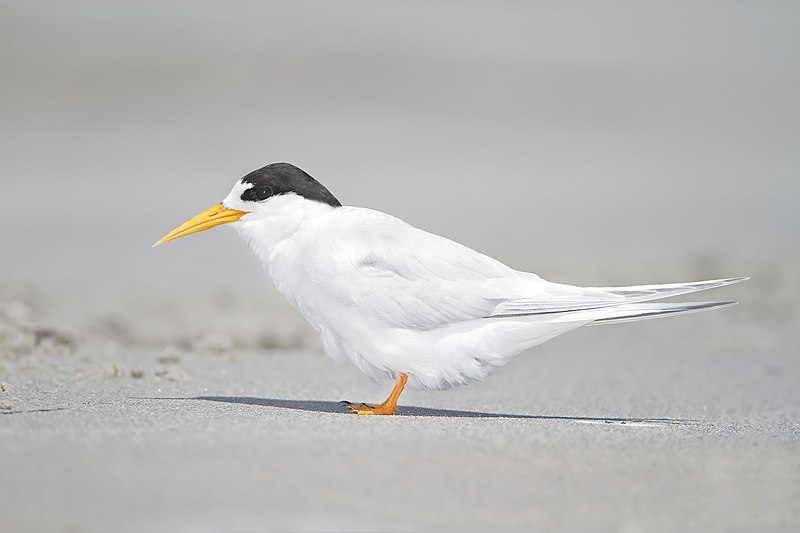
The Fairy Tern is a small tern native to the southwestern Pacific and listed as “Vulnerable” by the IUCN, with its New Zealand subspecies declared critically endangered.
The bird has a white body, light bluish-grey wings, and a black patch which does not extend further than their eye but not quite as far as their bill.
During mating season they develop an attractive breeding plumage of yellow breast feathers and grey legs.
They are able to fly long distances in search for food or migrate during winter months when available resources may be scarce in certain areas.
Despite this amazing ability to adapt however, human activities such as coastal development have caused severe population decline making them highly vulnerable species at risk of extinction without conservation efforts soon being implemented.Scientific classification:
| Kingdom | Animalia |
| Phylum | Chordata |
| Class | Aves |
| Order | Charadriiformes |
| Family | Laridae |
| Genus | Sternula |
| Species | S. nereis |
Also Featured In: Terns Species, Most Common Western Australia Birds
33. Grey Butcherbird
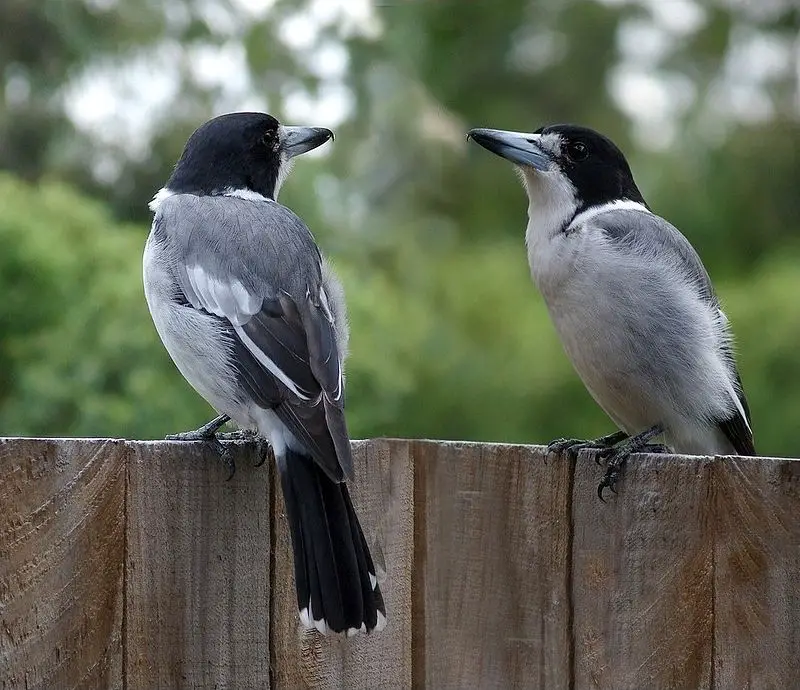
The Grey butcherbird is a species of bird found exclusively in Australia. It can be found in several different environments, including semi-arid and temperate zones.
The bird has a unique and distinctive birdsong. The Grey butcherbird is absent from the deserts of central Australia and the monsoon tropics of the north. It appears to be adaptable to its surroundings.Scientific classification:
| Kingdom | Animalia |
| Phylum | Chordata |
| Class | Aves |
| Order | Passeriformes |
| Family | Artamidae |
| Genus | Cracticus |
| Species | C. torquatus |
Also Featured In: Birds of Tasmania, Birds that You’ll find in Perth
34. Australian White Ibis
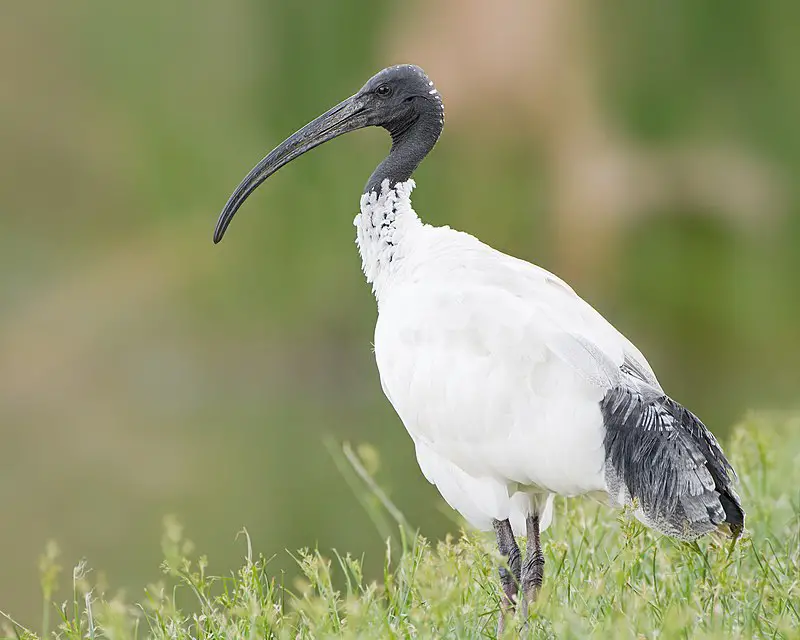
The Australian white ibis is a native wading bird of Australia. With its predominantly white plumage and long downcurved bill, it is easily recognized.
The bird is often found foraging for food on open grasslands, pastures and urban areas such as parks and gardens.
Despite being closely related to the African sacred ibis, the Australian white ibis is a separate species. It has a bare, black head and black legs.
The bird is well adapted to urban environments and often scavenges for food from waste bins or on streets.
While it has been subjected to negative perceptions due to its scavenging behavior, it remains an important member of the Australian ecosystem.Scientific classification:
| Kingdom | Animalia |
| Phylum | Chordata |
| Class | Aves |
| Order | Pelecaniformes |
| Family | Threskiornithidae |
| Genus | Threskiornis |
| Species | T. molucca |
Also Featured In: Water Birds Live around Us, Queensland Birds You Should Know
35. Spotted Pardalote
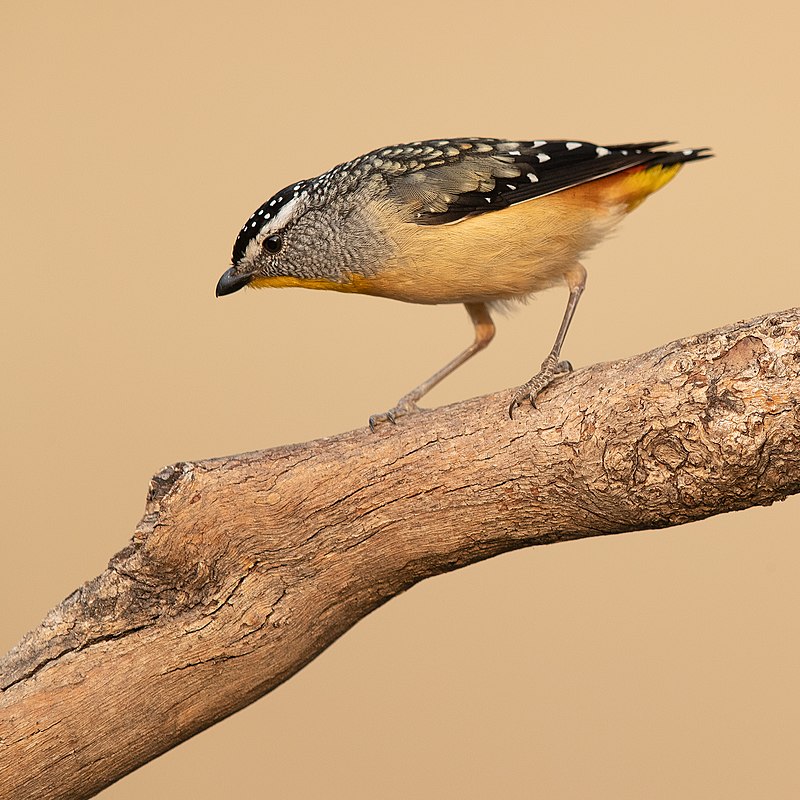
The spotted pardalote is a tiny bird found in various parts of Australia. It measures only 8 to 10 centimetres in length, making it one of the smallest birds in the country.
This colourful bird is also known as the diamondbird due to its bright plumage. Even though it is common in fertile regions of Australia, it is rarely seen up close, making it challenging to identify.
It can be found in the east coast, the south-east, and the south-west corner of the country.
Despite its small size, the spotted pardalote is a vocal bird with a distinctive call. Due to their small size, they are particularly susceptible to harsh weather and habitat destruction.
These birds play a vital role in various ecosystems through their feeding behaviour and are essential seed distributors.Scientific classification:
| Kingdom | Animalia |
| Phylum | Chordata |
| Class | Aves |
| Order | Passeriformes |
| Family | Pardalotidae |
| Genus | Pardalotus |
| Species | P. punctatus |
36. Black-Shouldered Kite
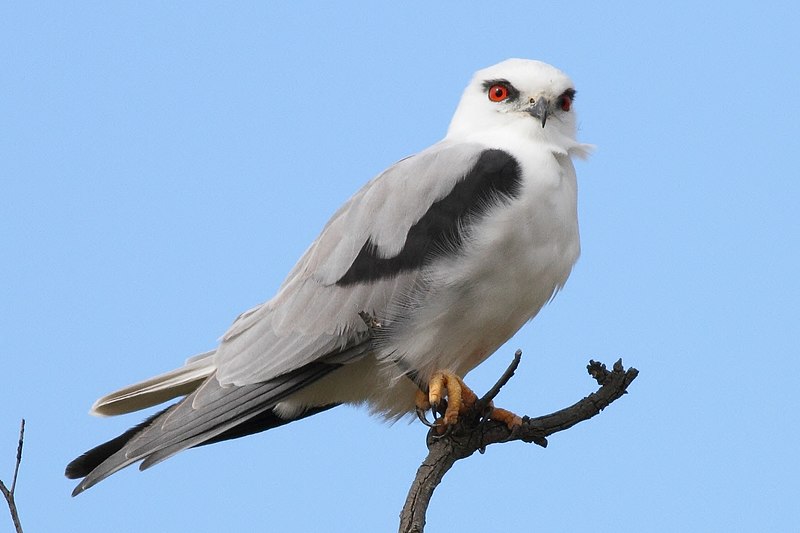
The Black-shouldered kite is a bird of prey that is found throughout Australia in open habitats. It is about 35 cm in length and has a wingspan of approximately 80 cm.
This species resembles others found in Africa, Eurasia, and North America. Despite its name, it is not closely related to the black-winged kite.
Instead, it belongs to the genus Elanus, which includes three other species.
The Black-shouldered kite has a distinctive pale grey head and body, with black shoulders and wings. It feeds mainly on small mammals, such as rodents and insects.
Although it is not considered threatened, habitat loss through land clearing and degradation poses a significant threat to its future existence.
This bird is an important part of Australia’s ecosystem and should be protected.Scientific classification:
| Kingdom | Animalia |
| Phylum | Chordata |
| Class | Aves |
| Order | Accipitriformes |
| Family | Accipitridae |
| Genus | Elanus |
| Species | E. axillaris |
37. Magpie-Lark
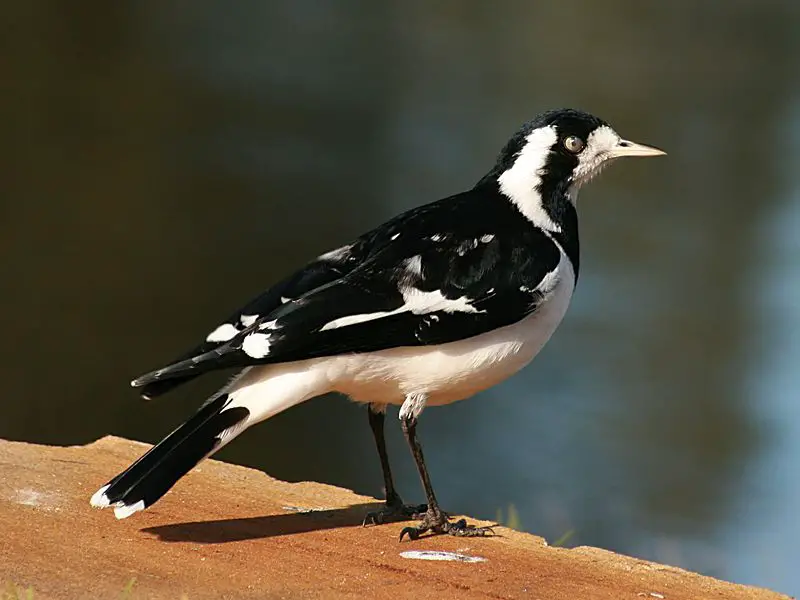
The Magpie-lark is a bird found in Australia, Timor, and southern New Guinea. It has black and white plumage, with different patterns for males and females.
John Latham first described this species in 1801. Formerly known as a mudnest builder, it has been reclassified recently.
The bird has several nicknames such as Wee magpie, Peewee, Peewit, and Mudlark.
It is a passerine bird, and its scientific name is Grallina cyanoleuca. The Magpie-lark is known for its beautiful call, which is similar to the sound “pee-wee.” It is a unique species that adds to the diversity of Australia’s wildlife.
The bird is a favourite among birdwatchers and nature lovers in general.Scientific classification:
| Kingdom | Animalia |
| Phylum | Chordata |
| Class | Aves |
| Order | Passeriformes |
| Family | Monarchidae |
| Genus | Grallina |
| Species | G. cyanoleuca |
Also Featured In: Birds that Charles Darwin Studied, Birds that Live Near Adelaide
38. Willie Wagtail
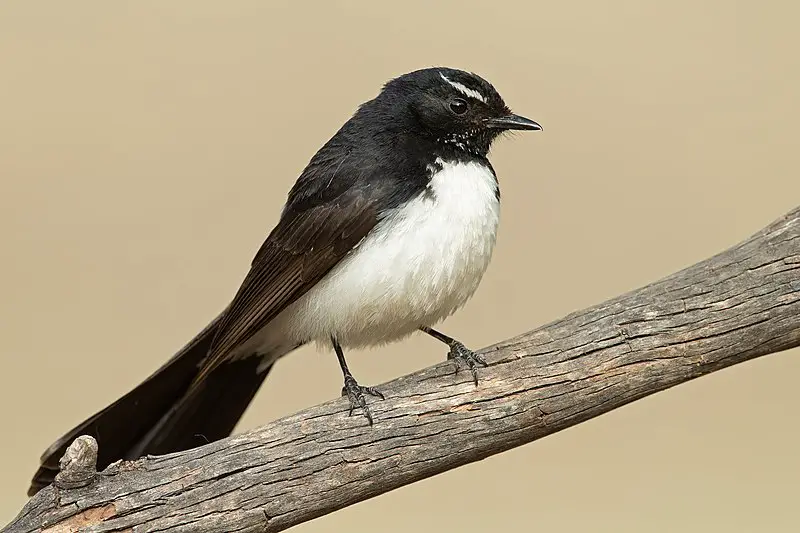
The Willie wagtail is a well-known bird in Australia, New Guinea, and other nearby regions. With its contrasting black and white plumage, this passerine bird stands out in most habitats, except for dense forests.
Its small size, measuring around 19- 21.5 cm in length, hints at its swift movements as it flies and dances through the air.
The Willie wagtail is a master of acrobatics and can quickly change direction while catching insects on the fly.
Its tendency to wag its tail up and down is how it got its name. This bird is a common sight in gardens, parks, and other open spaces, where it feeds on insects and small invertebrates.
Despite its size, the Willie wagtail is a bold and fearless bird and will attack much larger birds that threaten its territory.
Overall, this charming bird is a delight to observe in the wild.Scientific classification:
| Kingdom | Animalia |
| Phylum | Chordata |
| Class | Aves |
| Order | Passeriformes |
| Family | Rhipiduridae |
| Genus | Rhipidura |
| Species | R. leucophrys |
39. Hooded Dotterel
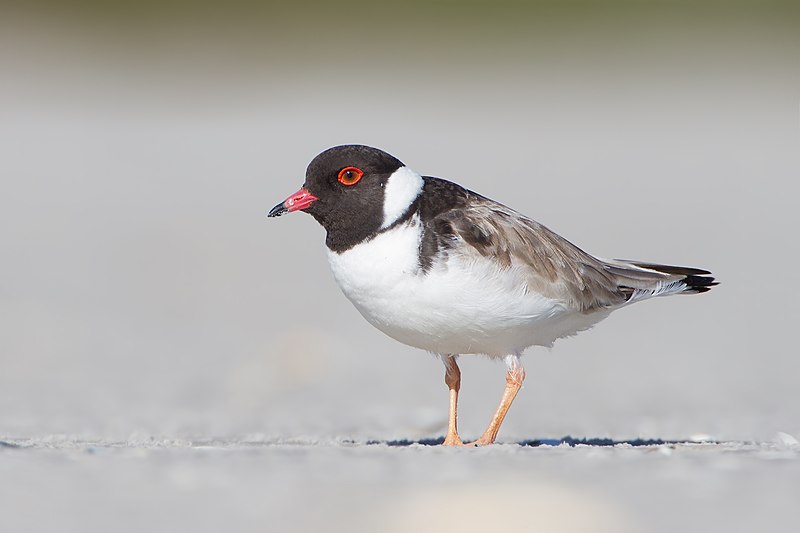
The Hooded Dotterel is a bird species that belongs to the Charadriidae family. It can be found exclusively in southern Australia, mostly inhabiting ocean beaches and subcoastal lagoons.
This bird species has two identified subspecies, with distinct populations in the east and west.
The eastern subspecies is particularly vulnerable, with different listings according to conservation organizations.
The Hooded Dotterel is also called the Hooded Plover, and it is a small bird with a distinct appearance.
Despite being a beach bird, it is not a strong swimmer and relies on its long, thin legs to move quickly on the sand.
Sadly, this bird species is threatened by human activities, such as off-road vehicles and unleashed dogs, and habitat destruction due to coastal development.
Therefore, conservation efforts are essential to protect this unique and important bird species.Scientific classification:
| Kingdom | Animalia |
| Phylum | Chordata |
| Class | Aves |
| Order | Charadriiformes |
| Family | Charadriidae |
| Genus | Thinornis |
| Species | T. cucullatus |
Also Featured In: Birds that Live in Kangaroo Island,
40. Australian Owlet-Nightjar
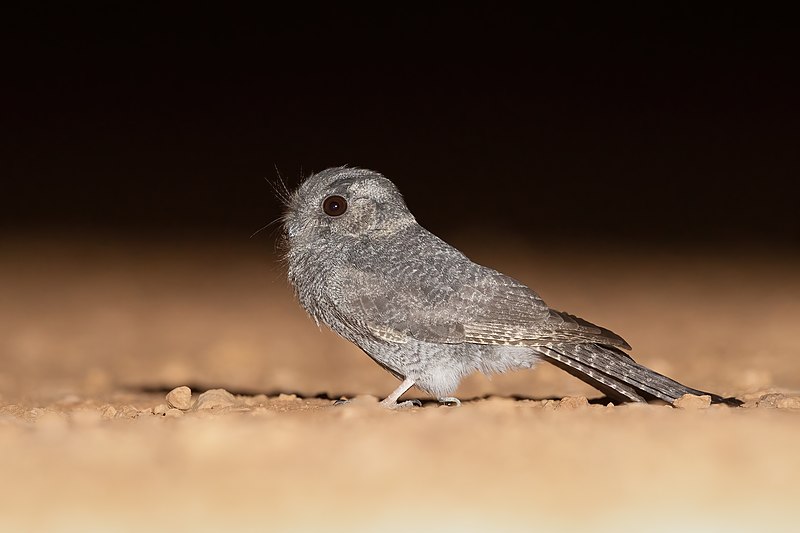
The Australian owlet-nightjar, also known as the moth owl, is a nocturnal bird found in open woodland in Australia and southern New Guinea.
Despite facing challenges from introduced species, it remains the most common nocturnal bird in Australia and is not currently considered threatened.
This small to medium-sized bird is known for its distinctive call and unique behavior, such as roosting in tree hollows during the day.
With its impressive adaptability and resilience, the Australian owlet-nightjar is a testament to the hardiness and tenacity of Australia’s diverse wildlife.Scientific classification:
| Kingdom | Animalia |
| Phylum | Chordata |
| Class | Aves |
| Clade | Strisores |
| Order | Aegotheliformes |
| Family | Aegothelidae |
| Genus | Aegotheles |
| Species | A. cristatus |
Also Featured In: Birds You’ll Find in Night, Common Townsville Birds
41. Eastern Spinebill
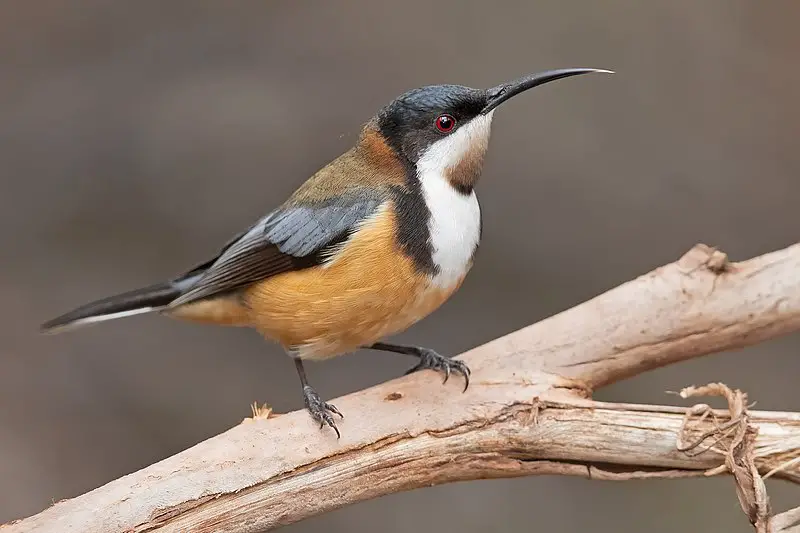
The Eastern spinebill, a honeyeater species, can be found in south-eastern Australia in various habitats, including forest, woodland, and urban gardens in Canberra, Sydney, Melbourne, and Adelaide.
It is distinguishable by its unique black, white, and chestnut feathers, a red eye, and a long bill that curves downwards.
It measures approximately 15 cm in length. The bird was originally identified as Certhia tenuirostris by an English ornithologist.
This bird species is famous for its love of nectar and the way it hovers in front of flowers to feed, leading to cross-pollination.
The Eastern spinebill is popular among birdwatchers due to its eye-catching plumage and its presence in urban areas. The species has an affinity for garden beds that have desirable nectar plants.
This bird is known for its swift and agile flying, which enables it to dart away from predators quickly.Scientific classification:
| Kingdom | Animalia |
| Phylum | Chordata |
| Class | Aves |
| Order | Passeriformes |
| Family | Meliphagidae |
| Genus | Acanthorhynchus |
| Species | A. tenuirostris |
Also Featured In: Birds that Live in Gold Coasts, Small Birds that Live in New South Wales
42. Red Wattlebird
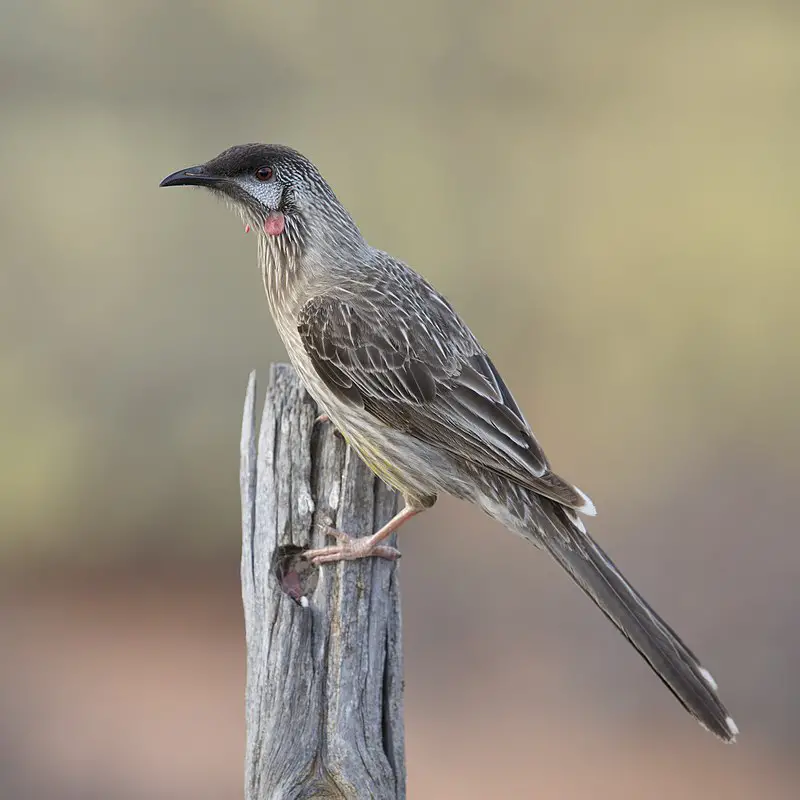
The Red Wattlebird is a large honeyeater found in southern Australia. It has grey-brown feathers, red eyes, and pinkish-red wattles on its neck.
The bird also has white streaks on its chest and a bright yellow patch on its belly.
It measures 33-37 cm in length, making it the second largest Australian honeyeater. The male and female birds have similar physical characteristics.Scientific classification:
| Kingdom | Animalia |
| Phylum | Chordata |
| Class | Aves |
| Order | Passeriformes |
| Family | Meliphagidae |
| Genus | Anthochaera |
| Species | A. carunculata |
Also Featured In: New South Wales Birds You Need to See,
43. Brown Thornbill
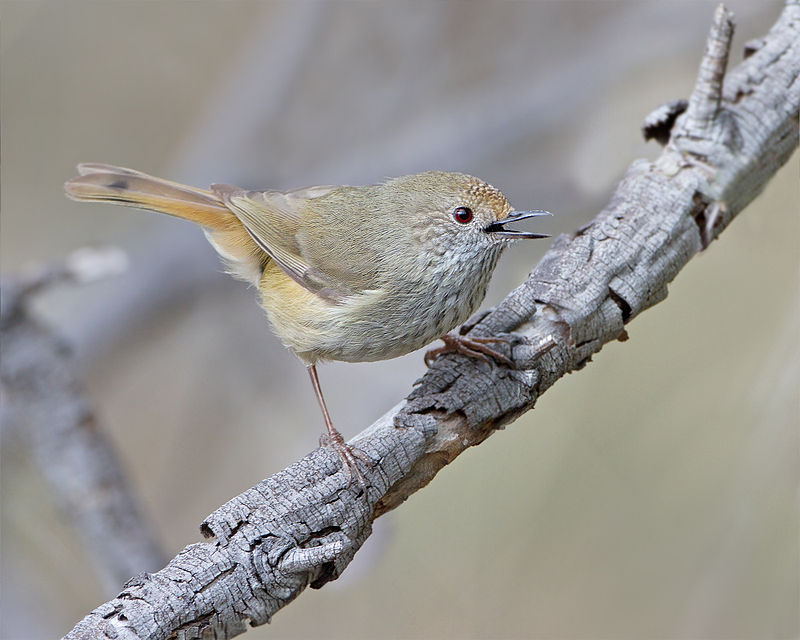
The Brown thornbill is a small bird native to eastern and south-eastern Australia, including Tasmania. With a maximum length of 10 cm, the bird is predominantly brown, gray, and white in appearance.
It belongs to the order Passeriformes and the family Acanthizidae, with the species consisting of five different subspecies. The bird’s diet mainly includes insects.
Its habitat includes various forest types, woodlands, and heaths, where it prefers to inhabit the lower layers of vegetation.
The Brown thornbill is known to be a skillful forager, and it generally feeds on insects found on the bark and leaves of trees.
The bird’s beautiful plumage and melodious chirping make it a popular species amongst birdwatchers and nature enthusiasts.Scientific classification:
| Kingdom | Animalia |
| Phylum | Chordata |
| Class | Aves |
| Order | Passeriformes |
| Family | Acanthizidae |
| Genus | Acanthiza |
| Species | A. pusilla |
Also Featured In: Birds of King Island,
44. Little Wattlebird
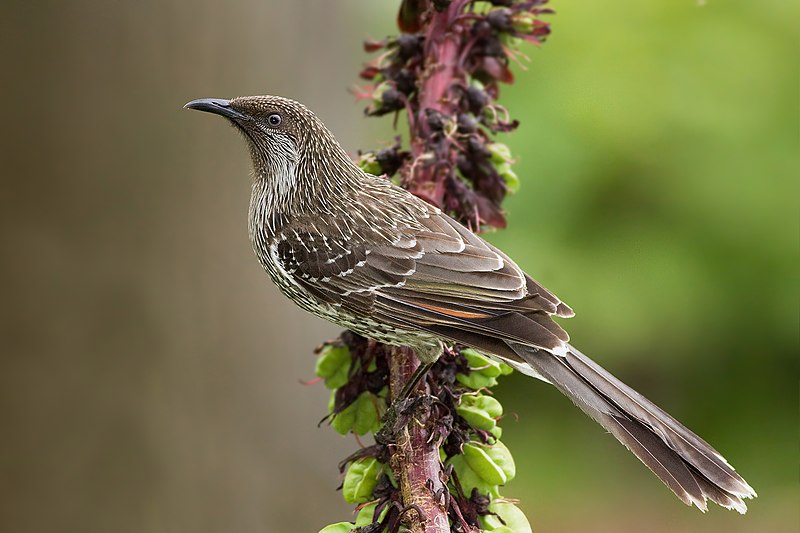
The Little Wattlebird, commonly known as the brush wattlebird, belongs to the Meliphagidae family of passerine birds.
These birds are primarily found in coastal and sub-coastal southeastern Australia.
Ornithologist John Latham described the species for the first time in 1801, under the name Merops chrysoptera.
Today, the Little Wattlebird is categorized under the Anthochaera genus. Although small, these birds possess a distinct wattled appearance and a brush-like tail.
Little Wattlebirds are known for their complex songs, consisting of various clicks, whistles, and harsh calls.
They feed on insects, nectar, fruit, and pollen, using their long, curved beaks to extract nectar.
These birds are known to be territorial and active communicators, making them a fascinating species to observe in their natural habitat.Scientific classification:
| Kingdom | Animalia |
| Phylum | Chordata |
| Class | Aves |
| Order | Passeriformes |
| Family | Meliphagidae |
| Genus | Anthochaera |
| Species | A. chrysoptera |
45. Grey Fantail
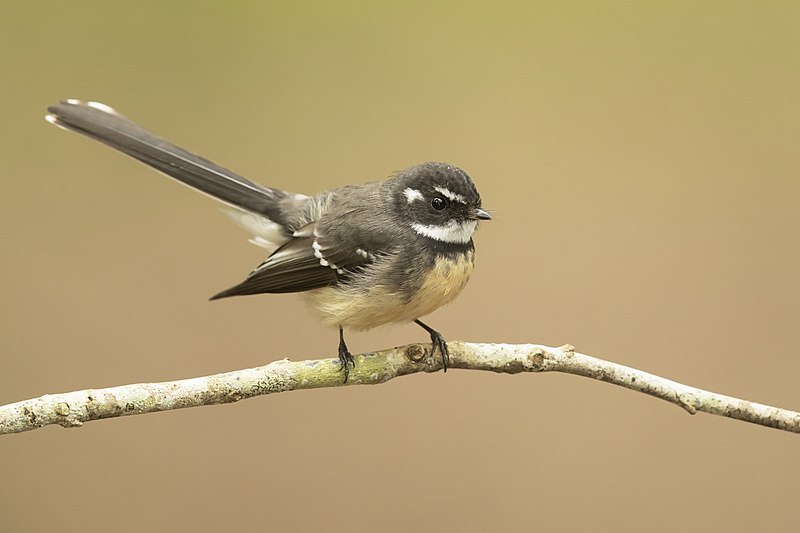
The grey fantail is a tiny bird that primarily eats insects. It has no sexual distinctions, and it may be discovered in Australia, the Solomon Islands, Vanuatu, and New Caledonia.
Although some scientists believe it is the same as the New Zealand fantail for various reasons, including similarities in appearance, others believe it should be classified as a distinct species.
One of the distinguishing features has to do with the bird’s calls. The grey fantail is a prevalent species among bird enthusiasts due to their ability to learn new things and interact with their surroundings.
They are clever birds that enjoy playing and perching on trees. The grey fantail’s habitat comprises woodlands, shrublands, and forests, particularly near bodies of water.
Overall, this species is a delightful addition to any bird lover’s collection.Scientific classification:
| Kingdom | Animalia |
| Phylum | Chordata |
| Class | Aves |
| Order | Passeriformes |
| Family | Rhipiduridae |
| Genus | Rhipidura |
| Species | R. albiscapa |
Also Featured In: Birds that Live in Sunshine Coast, Common Flinders Island Birds
46. Far Eastern Curlew
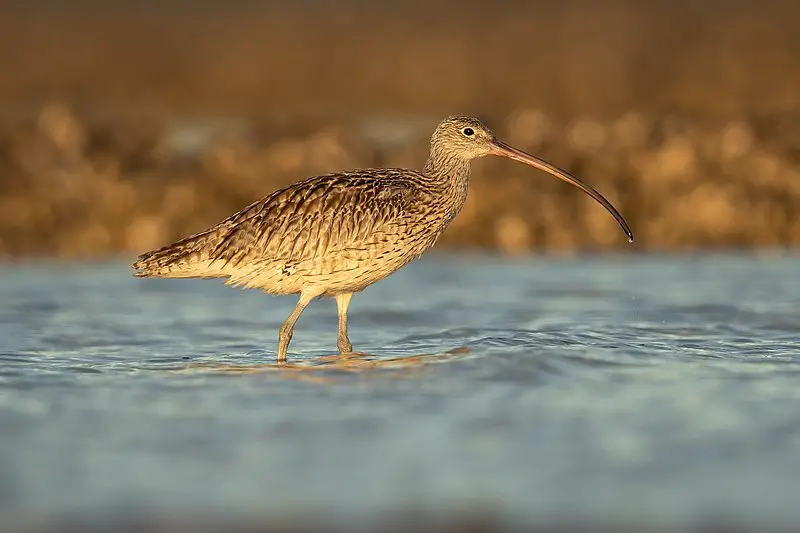
The Far Eastern curlew, also known as Numenius madagascariensis is the world’s largest sandpiper, typically measuring between 60-66cm in length and an impressive 110cm across the wings.
This large shorebird shares a similar appearance to the long-billed curlew, but is slightly larger in size.
The Far Eastern curlew can be identified by its plain, unpatterned brown underwing, which sets it apart from other curlews.
With mostly brown coloring, this species is a sight to behold, and admired by bird enthusiasts.
Despite its size, this bird is known for its grace and agility along shorelines. The Far Eastern curlew is a unique species, and its size alone makes it an impressive sight to see in the wild.
Overall, this bird is an important part of the coastal ecosystem and a fascinating creature to study.Scientific classification:
| Kingdom | Animalia |
| Phylum | Chordata |
| Class | Aves |
| Order | Charadriiformes |
| Family | Scolopacidae |
| Genus | Numenius |
| Species | N. madagascariensis |
47. Southern Emu-Wren
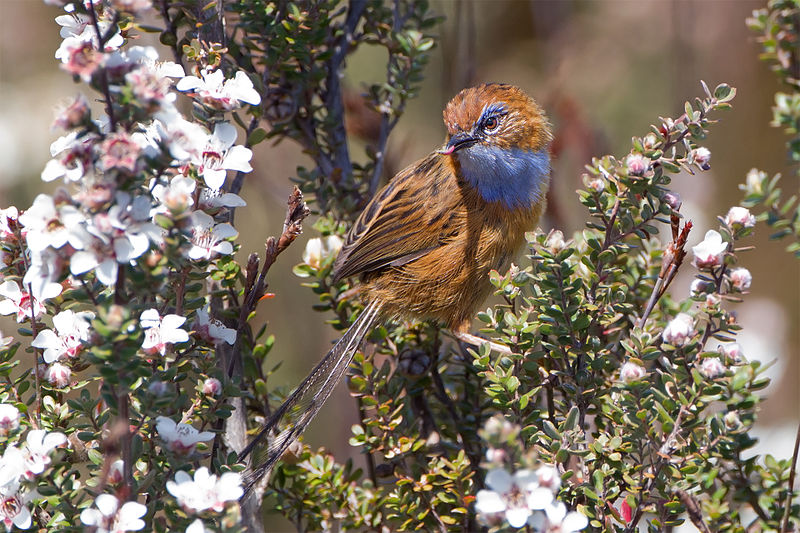
The Southern emu-wren bird is an Australian species found in temperate forests, Mediterranean-type shrubby vegetation, and swamplands.
This small bird belongs to the Maluridae family and is known for its distinctive appearance.
The male has rusty-brown upper parts with streaks of black and a reddish crown. Its wings are grey-brown, and its throat, upper chest, and eyes are a beautiful sky-blue.
However, this stunning bird is unfortunately considered to be a vulnerable species due to habitat loss and degradation caused by human activities.
Conservation efforts are underway to protect the Southern emu-wren and ensure its survival for future generations to enjoy.Scientific classification:
| Kingdom | Animalia |
| Phylum | Chordata |
| Class | Aves |
| Order | Passeriformes |
| Family | Maluridae |
| Genus | Stipiturus |
| Species | S. malachurus |
48. Hoary-Headed Grebe
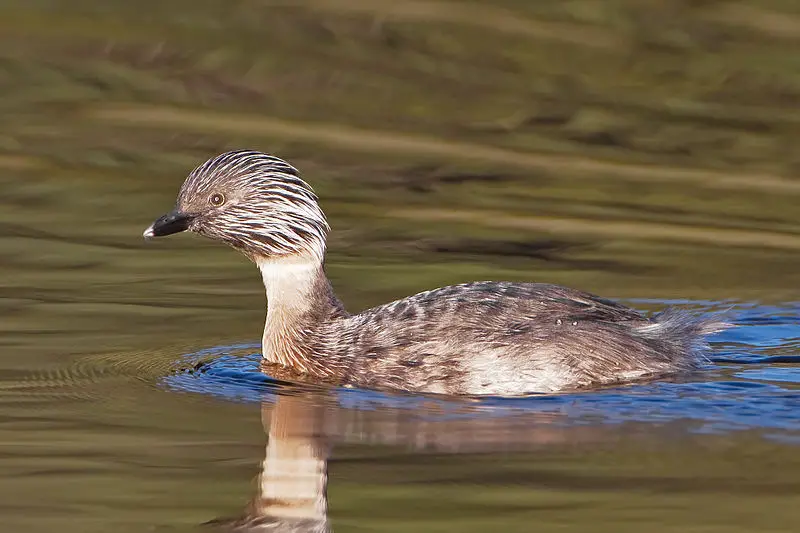
The hoary-headed grebe, also known as Poliocephalus poliocephalus, is a type of grebe that can be found in the southern parts of Australia with a population of about 500,000.
They migrate to the island of Tasmania during winters. This bird is named after the streaks of silvery-white color on its black head. The habitat of the hoary-headed grebe is similar to that of the Australasian grebe.
Despite being a common bird in Australia, it is still a fascination for birdwatchers.
The hoary-headed grebe is an aquatic bird that feeds on small fish and insects. It’s a sight to behold when it dives underwater to catch its prey.
The species is unique for its elegant appearance and incredible diving abilities.Scientific classification:
| Kingdom | Animalia |
| Phylum | Chordata |
| Class | Aves |
| Order | Podicipediformes |
| Family | Podicipedidae |
| Genus | Poliocephalus |
| Species | P. poliocephalus |
49. Slender-Billed Thornbill
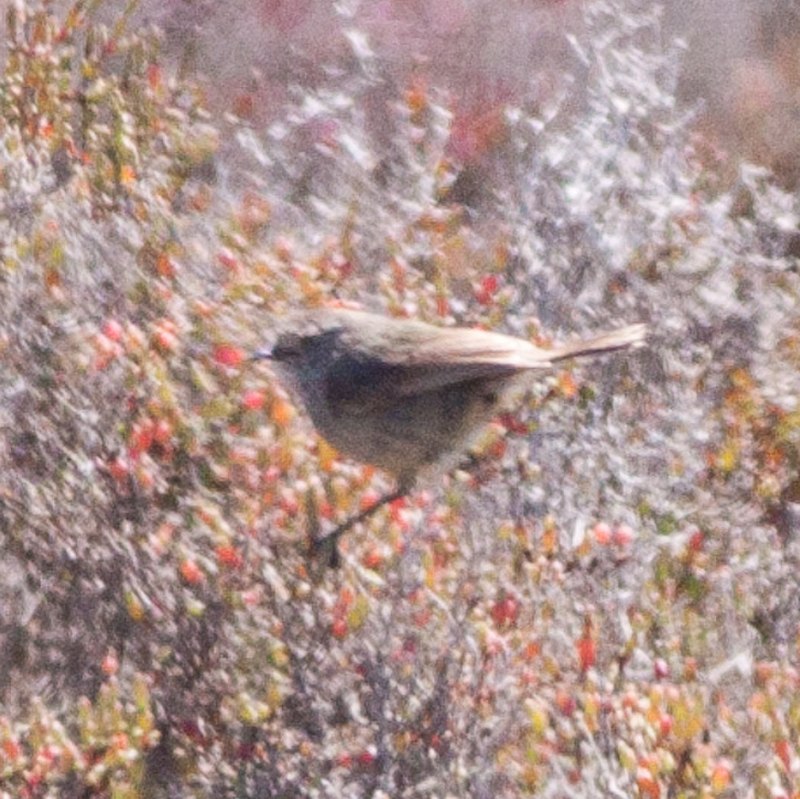
The slender-billed thornbill is a tiny bird found in Australia’s shrublands and salt marshes. It has three subspecies. This bird primarily feeds on insects and spiders that it catches in the shrubs of its habitat.
It prefers to stay on the higher elevations of shrubs and rarely feeds on the ground. Typically, its habitat is around salt lakes or low heath on sand plains.Scientific classification:
| Kingdom | Animalia |
| Phylum | Chordata |
| Class | Aves |
| Order | Passeriformes |
| Family | Acanthizidae |
| Genus | Acanthiza |
| Species | A. iredalei |
50. Australian Raven
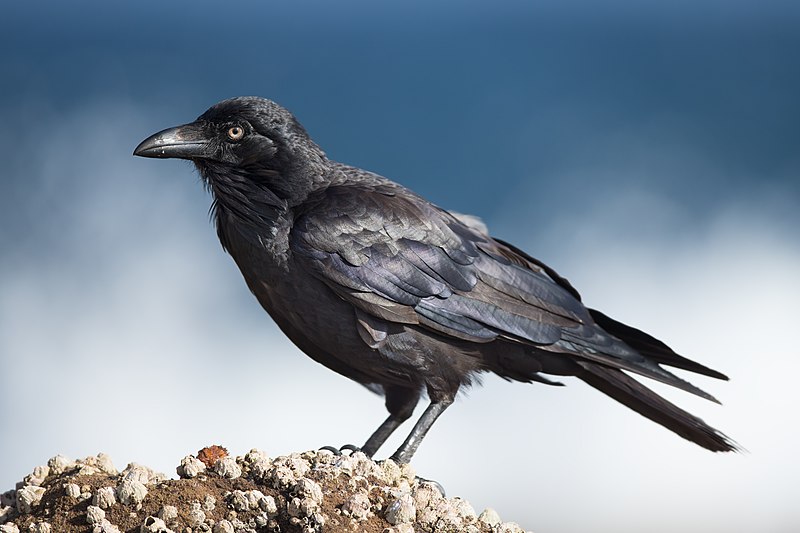
The Australian raven is a striking passerine bird found in southern and northeastern Australia. It boasts an impressive length of 46-53 centimeters, and its sleek black plumage, beak, and mouth contribute to its imposing appearance.
The raven’s strong legs and feet are also colored a deep grey-black, and its black feathers have subtly grey bases. With a glossy purple, blue, or green sheen to its upperparts, this bird cuts a commanding figure.
In addition to its physical attributes, the Australian raven is known for its intelligence and adaptability, and it can often be seen scavenging for food in urban areas.
Overall, this bird is a fascinating member of the Corvus family and a proud representative of Australia’s diverse birdlife.Scientific classification:
| Kingdom | Animalia |
| Phylum | Chordata |
| Class | Aves |
| Order | Passeriformes |
| Family | Corvidae |
| Genus | Corvus |
| Species | C. coronoides |
51. Pachycephalidae
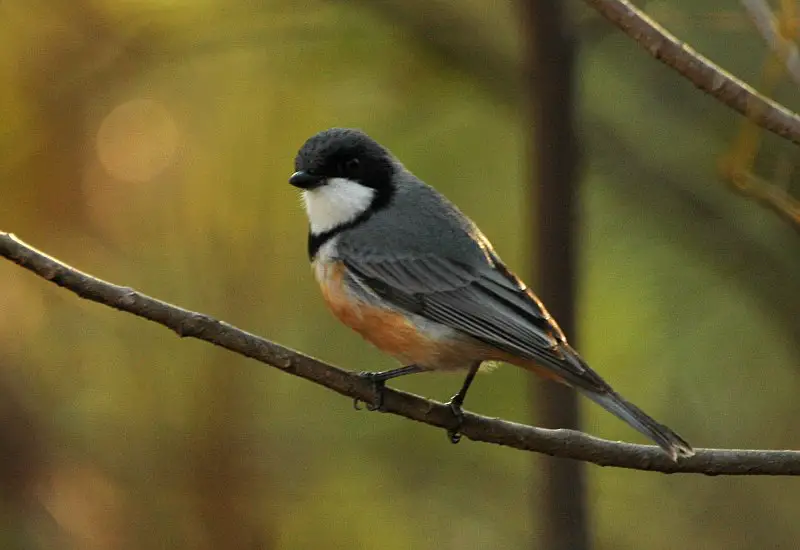
Pachycephalidae is a family of songbirds including whistlers, shrikethrushes and certain pitohuis. There are 64 species distributed across five genera that vary in size and are predominantly found across Australasia.
These birds are part of an ancient Australo-Papuan radiation of songbirds. Australia and New Guinea are the primary centres of their diversity.Scientific classification:
| Kingdom | Animalia |
| Phylum | Chordata |
| Class | Aves |
| Order | Passeriformes |
| Superfamily | Orioloidea |
| Family | Pachycephalidae Swainson, 1832 |